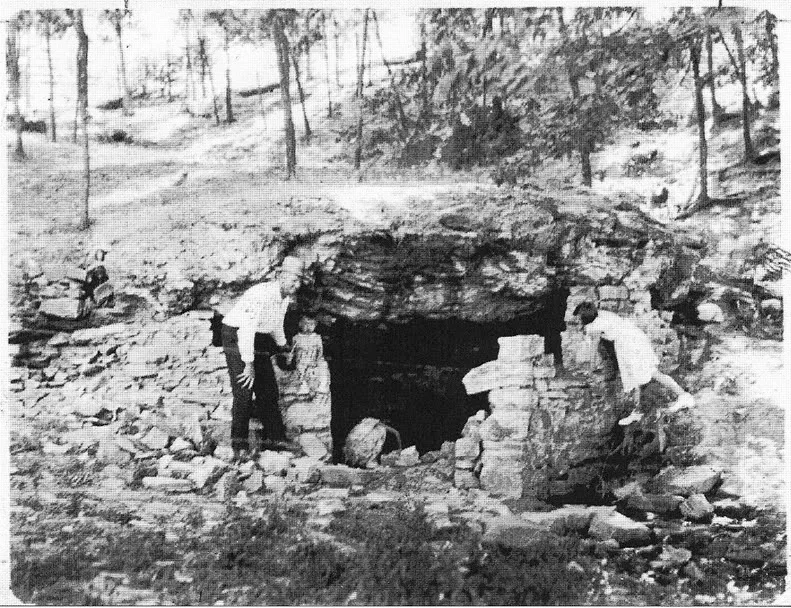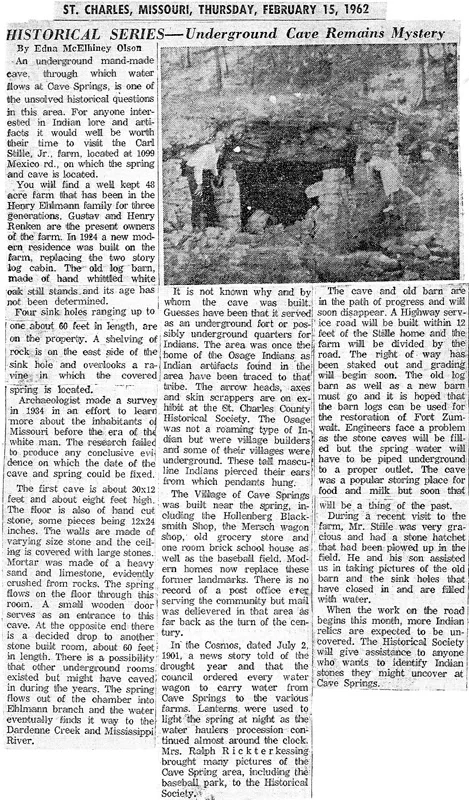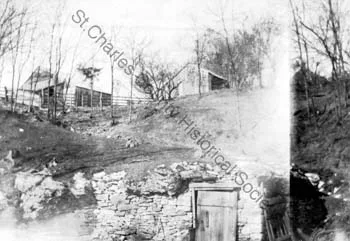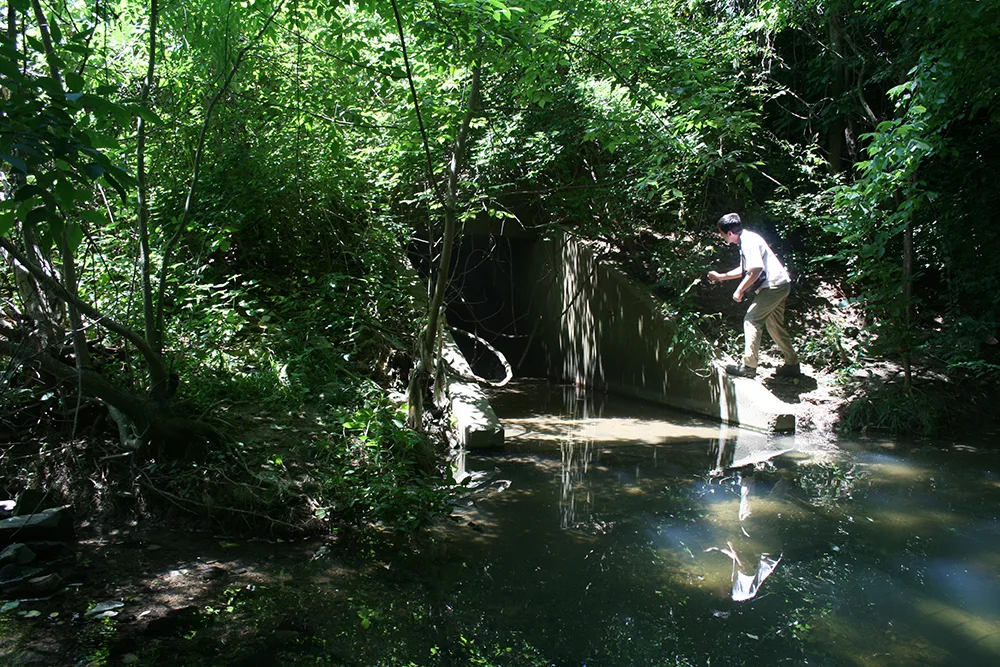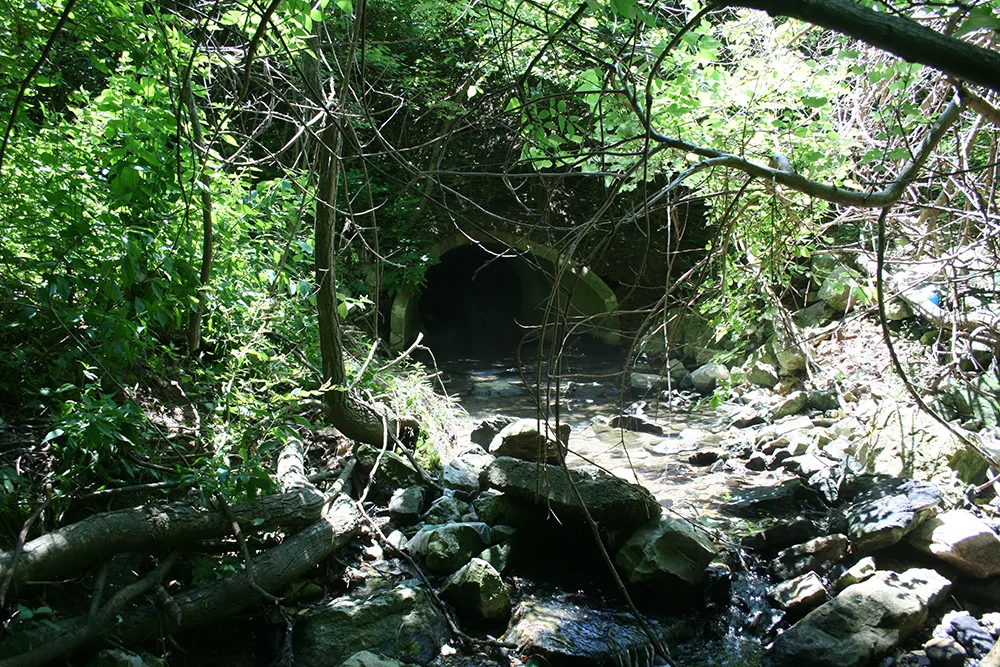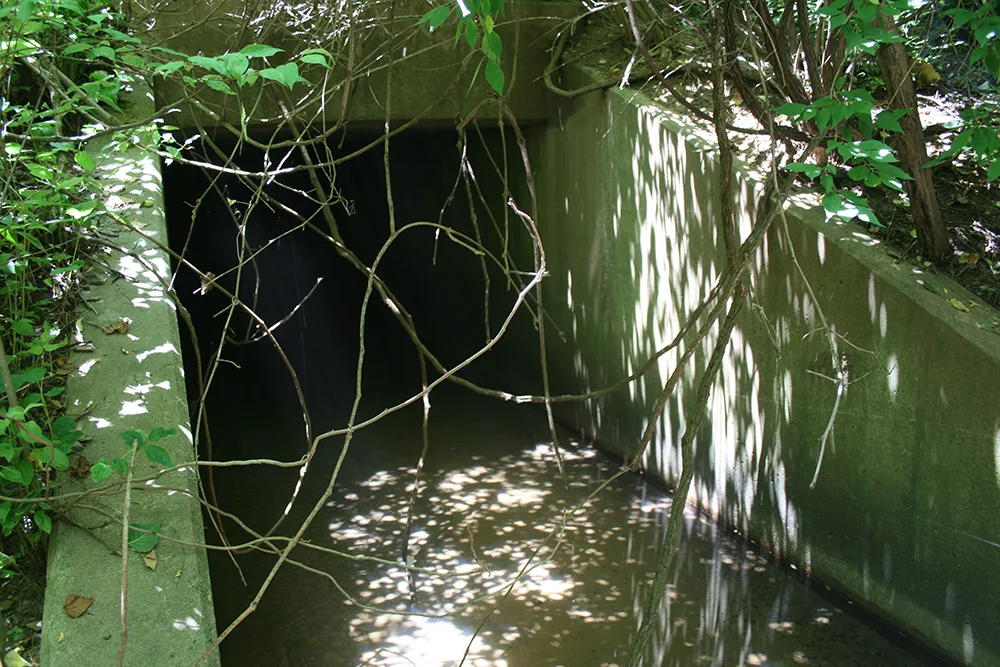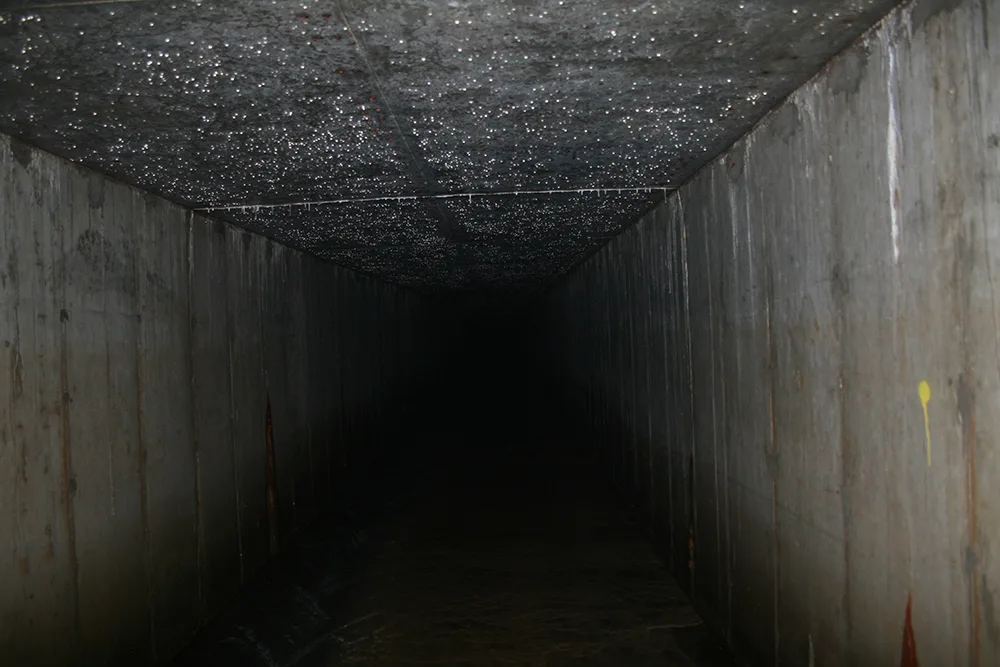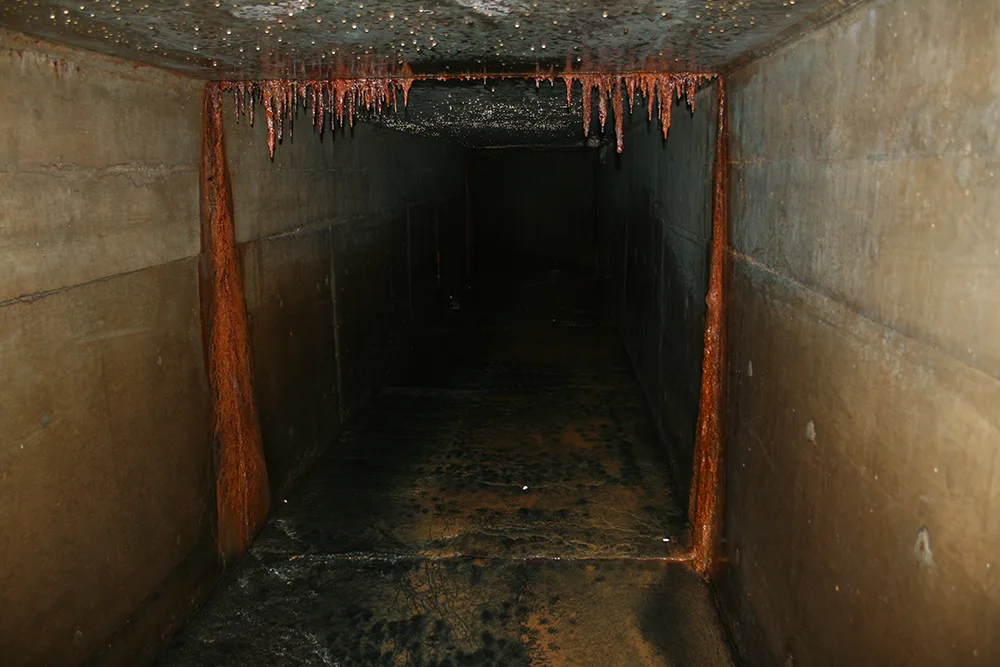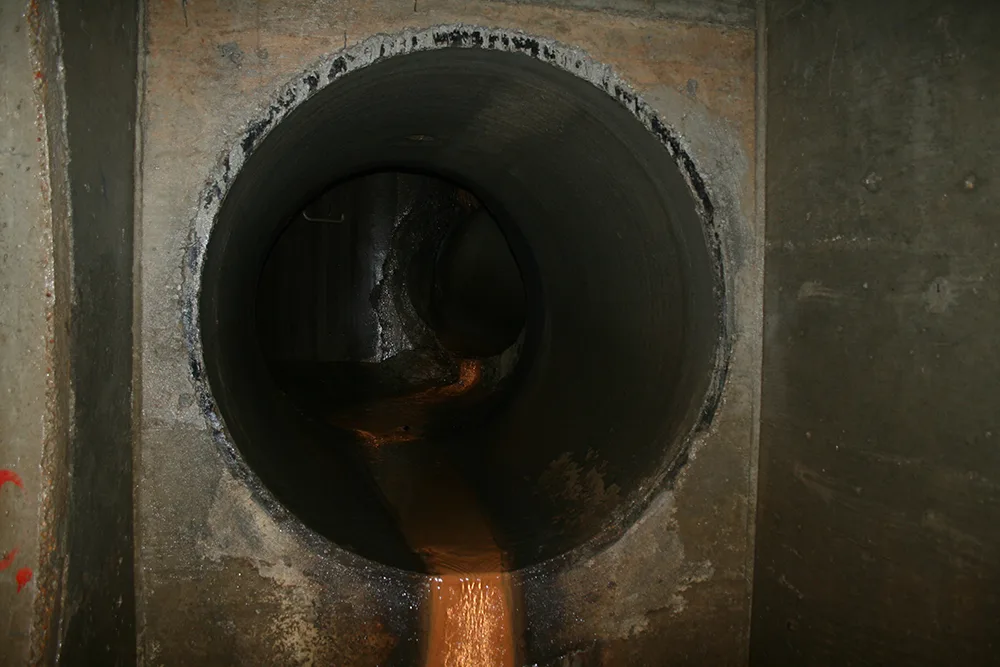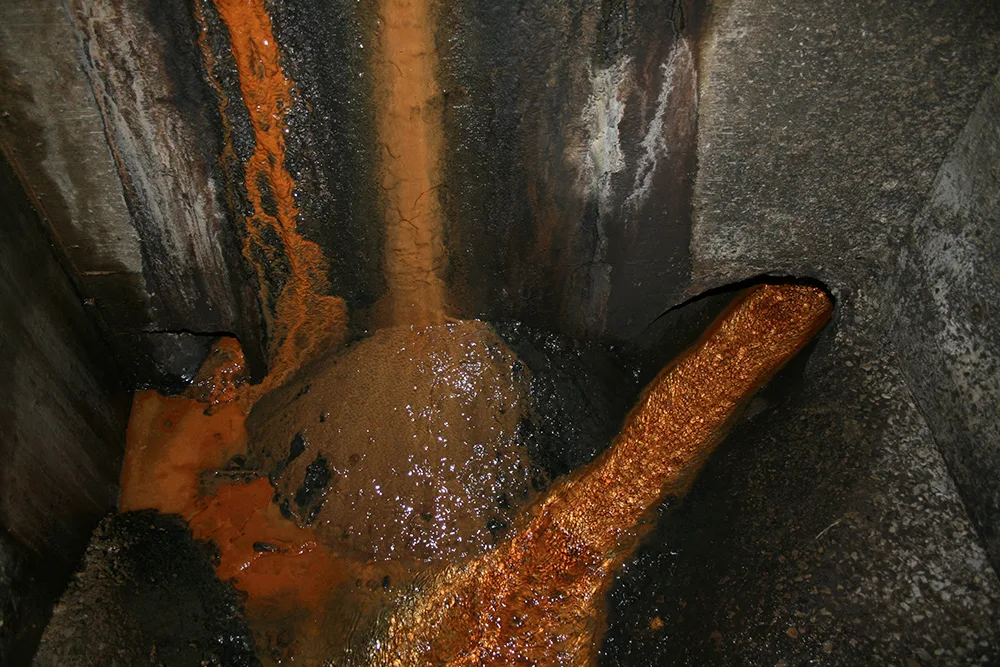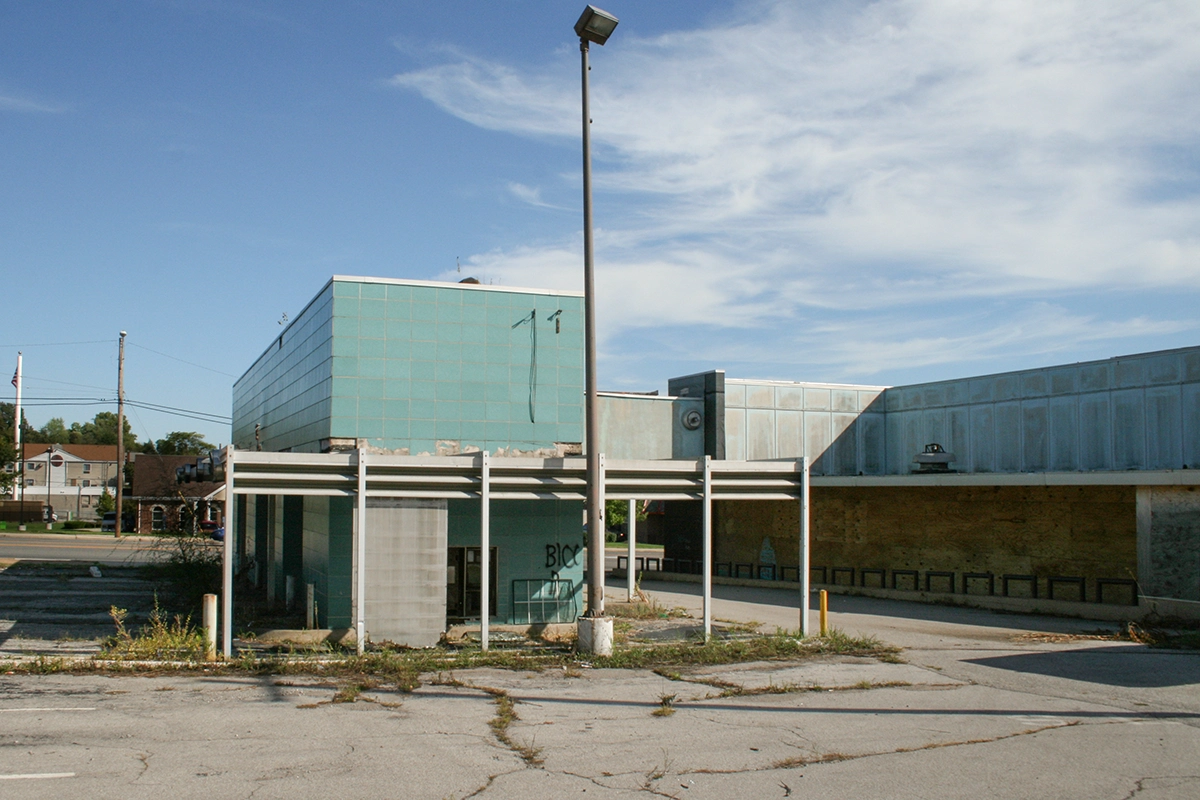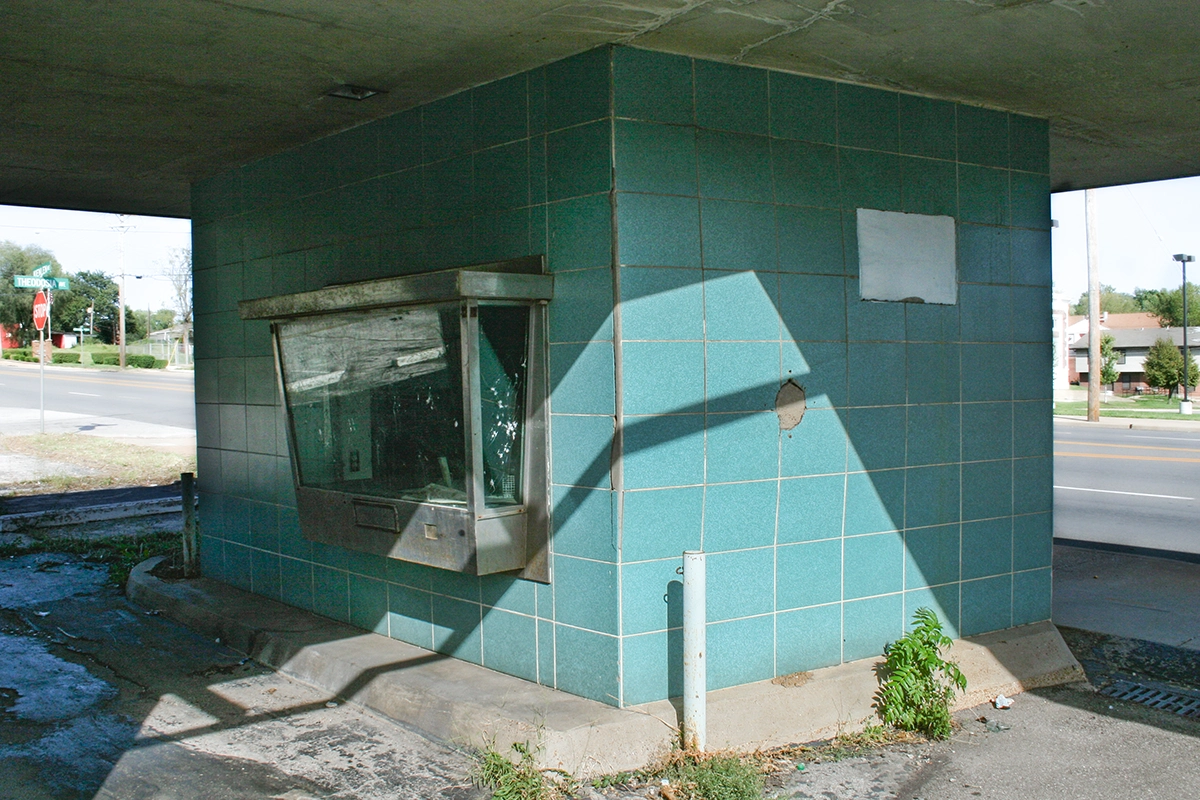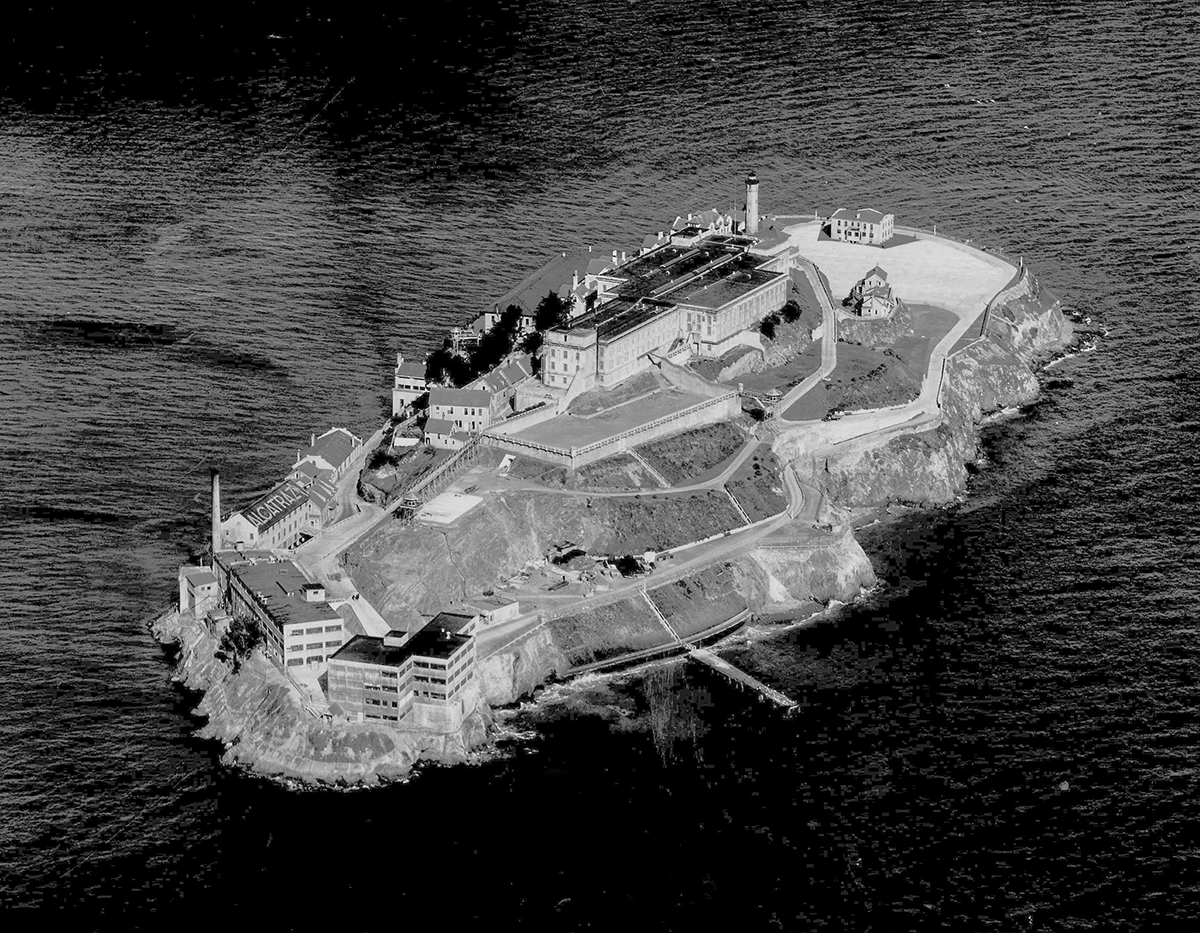Wednesday, December 29, 2010
This busy stretch of road was in fact named after an historic cave and spring that were destroyed in the name of progress in 1962 when Interstate 70 was developed through Saint Peters, Missouri. Googling this proved futile and it took a lot of research from a variety of obscure sources to uncover this information. For example, I personally dug up these newspaper articles from the archived originals and posted them online.
I have decided to share this because there's really nothing left of it. Aside from some drains and tunnels running underneath the highway, one wouldn't find much of interest here without knowing the history of the spring. Even then, as we learned, the spring has been rendered unrecognizable and therefore, sadly disappointing.
According to the following article, discoveries of Native American artifacts were made and volunteers were invited to help identify and catalog them. It is unknown exactly what all was found.
"An underground man-made cave, through which water flows is one of the unsolved historical questions in this area... The first cave is about 30x12 feet and about eight feet high. The floor is of hand cut stone, some pieces being 12x24 inches. The walls are made of varying size stone and the ceiling is covered with large stones... The spring flows on the floor through this room. A small wooden door serves as an entrance.. At the opposite end there is a decided drop to another stone built room about 60 feet in legnth.. It is not known why and by whom this was built... The area was once home of the Osage Indians as Indian artifacts found in the area have been traced to that tribe.."
"In the 'Cosmos', dated July 2 1901, a news story told of the drought year and that the council ordered every water wagon to carry water from Cave Springs to the various farms. Lanterns were used to light the spring at night as the water haulers procession continued almost around the clock.."
"During a recent visit to the farm, Mr. Stile was very gracious and had a stone hatchet that had been plowed up in the field... The cave and the old barn are in the path of progress and will soon disappear. A Highway service road will be built within 12 feet of the home and farm will be divided by the road.."
Begin Historic Photos
End Historic Photos
6-23-09
So close yet no cave...on our first visit we entered the outlet and traversed through most of the drains in the area, probably covering about a mile of subterranean passages which all looked about the same:
1-5-2010:
On our previous attempt, we started by entering the outlet and walking or crawling through all the drains in the area, popping up at various spots well outside the target zone, beyond Denny's on the NE end and even further on the opposite side. This time, we entered via a manhole nearer the source and located what's left of it. I do not recommend anyone try to find it because it takes a lot of crawling through small tunnels and there's really nothing to see aside from what I have posted here. Storm drains are pretty boring and all look about the same. The following pictures indicate a combined spring/storm sewer drain which runs below the highway and drains into a creek on the other side.
There was a steady flow of crystal clear water coming from a small tube purpose built and it's evident the designers of this duct accurately calculated the constant flow from its source, evidence that this is in fact the spring and not simply runoff. The bright orange of the clay here indicates also that this is groundwater. We explored the extent of navigable passages on either side of the highway around this intersection and unfortunately, we must conclude that whatever cave that may have been here is no longer.
The only thing left of the cave/spring is, therefore, the water flowing from the top right in the below pictures. The room in which this picture was taken is approximately 10'x5' and the tube with the water flowing out of it is approximately 12". Above ground, a short distance away and in precisely the direction this is coming from, is a filled in sinkhole.
Altogether, this is conclusive evidence of the existence of the historic Cave Springs. Occasionally, street names are but a reminder of their long forgotten namesakes.
Sunday, September 12, 2010
The State Bank and Trust of Wellston was constructed in 1955 and saw use as late as 2006 when it last functioned as a Regions Bank. It's hard to imagine it was being used that recently, however, considering that the decor appears potentially original and the basement is completely flooded. The overall condition suggests it had been vacant for much longer. Inside it is very dark and moldy. The floors are buckling from the humidity of a basement full of murky water and the giant steel safe doors are beginning the long slow process of returning to dust.
The most unusual thing about this bank is that it was evidently constructed during an imaginative time in the 1950s wherein personal air travel (via helicopter, for example) was expected by some to become as commonplace as the automobile.
During the demolition of the State Bank of Wellston in 2014, much fuss had been made in local news about the interesting/unique sign which stood atop a tall tower on the roof. The tower was rescued by preservationists and everyone rejoiced, but none of the articles paid any attention to what was actually the main design aspect around which this bank was constructed and which was prominently advertised at the time of its Grand Opening. This feature had remained an unexplained mystery (to myself, at least) ever since we first happened to discover it: teller windows... on the roof. We could have just as easily skipped the roof on this occasion and missed out on the opportunity to uncover this forgotten piece of weird Saint Louis history.
According to an article in "Commercial West" published in October 1954: "Fly-in banking by helicopter may soon be a reality.. The increased use of helicopters within the next decade is inevitable. When the whirlybird supplements the family car, America's bankers will find a way to offer fly-in service and they will operate it as efficiently as their other modern banking services.. State Bank and Trust Co of Wellston, St Louis, is considering the possibility of using a helicopter to dramatize the opening of its unique sky-top banking installation in November. The bank already has a ramp which allows motorists to drive up from the street onto the roof". This prediction was made by Edwin H Molser Jr, whose company designed and installed the teller windows here. The same magazine later added the following details "A major innovation of drive-in rooftop banking is the use of two bullet-proof Snorkel tellers, designed by Mosler Safe Co., New York. Customers drive onto the roof of the bank from a rear-street parking area which slopes upward, and pull up to the Snorkel teller. Actually, the teller in each Snorkel is stationed on the first floor of the bank. But teller and customer are in constant view of each other and communicate through a system of two-way speakers and periscope mirrors. A small tray-like elevator conveys deposit and withdrawal transactions from motorist down to the teller and up again in just 18 seconds."
According to an article published in "Mid-Continent Banker" in 1955: The idea behind rooftop banking was created by Sam Goldenberg, head of the bank’s advertising agency. Grand Opening "festivities began with an invitational preview for bankers, the press and special guests on March 23 (1955). Nearly 1,000 persons took the tour through the building from rooftop, where they tried out the snorkel tellers, down the elevator to the main banking floor with its many innovations in bank design."
The sign/tower, a most excellent '1950's futuristic' work of art, was only a secondary feature being advertised at the time of this bank opening to the public. The whole "Banking in the sky" gimmick has since been forgotten, its novelty having been completely eclipsed by the sign. The article above describes the sign thusly "A giant revolving WeatherCaster, 18 feet in circumference, towering 100 feet above the rooftop, records barometrically forthcoming weather changes. The tower includes a revolving advertising display identifying the bank and its services."
Finally, the same article gives the following general description of the bank at the time of its grand opening: "The reinforced concrete building, de signed by Bernard Bloom, is faced in front with granite constructed with one-piece corner slabs. Front of building is series of set-backs, with landscaped areas and projected display windows for merchandising bank’s services. Interior is done in modern themes with brown and beige colors predominating. Tellers cages and check desks are designed with Micarta Truwood walnut finish with marble base and deal plates. Fixtures blend with walnut paneling on walls which can’t be marred by traffic. Walls that “take punishment ” are covered with a special vinyl plastic fabric, not easily marred, and can be washed instead of painted. Tellers cages arranged in curving pattern to assure additional privacy. Sit-down checking desks in lobby. Safe deposit box area literally “built into the hill.” A massive 70,000 pound vault door becomes the center of interest in the bank lobby design. Attractive lighting fixtures display the vault door to best advantage and attract attention to it. Rooms housing air conditioning equipment and other utilities are located on mezzanine floor and are accessible from drive-on roof. Entire basement area available for cafeteria, storage vaults, assembly room, locker space and rest rooms."
State Bank and Trust of Wellston was demolished in the spring of 2014
Begin Historic Photos
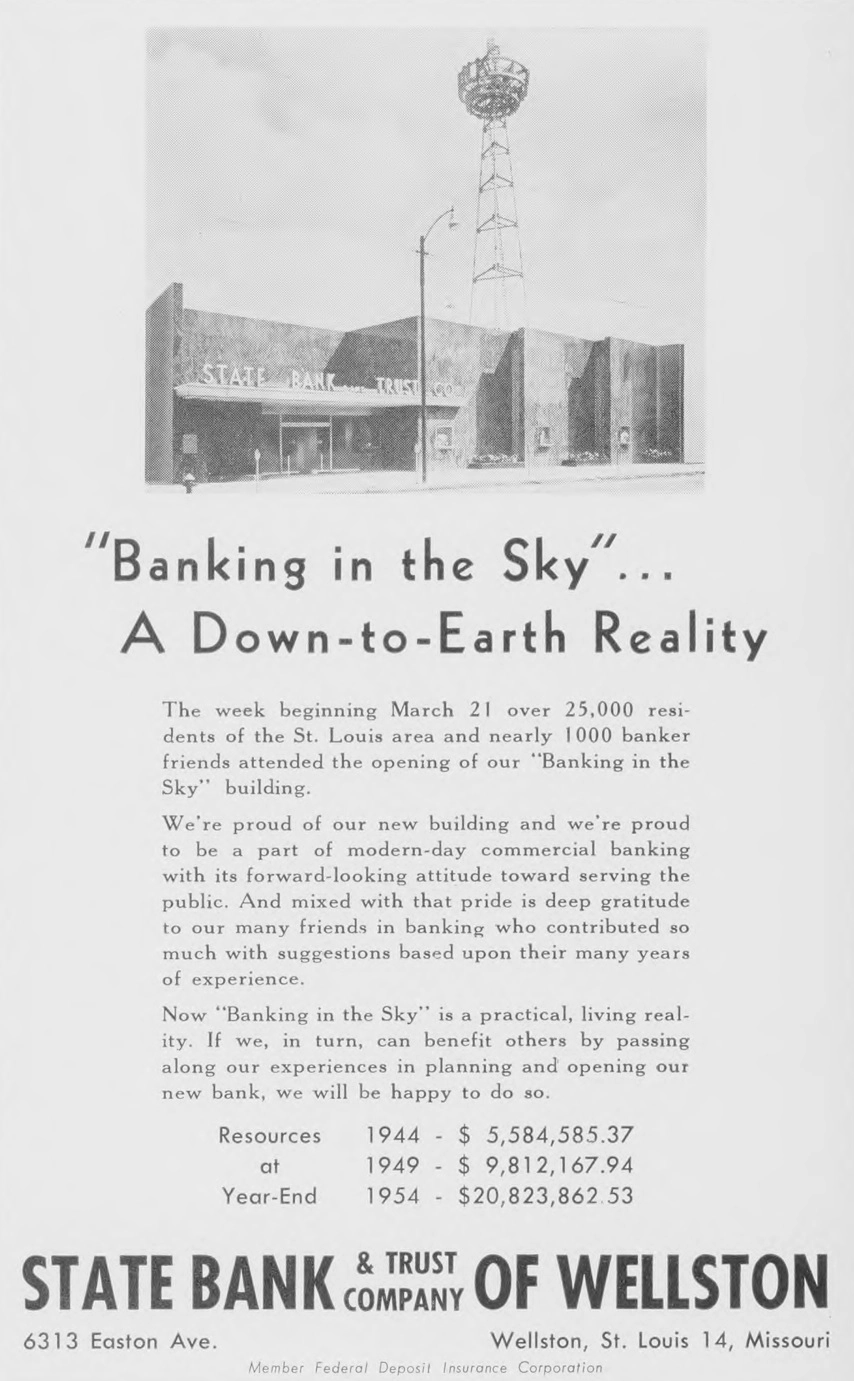
End Historic Photos
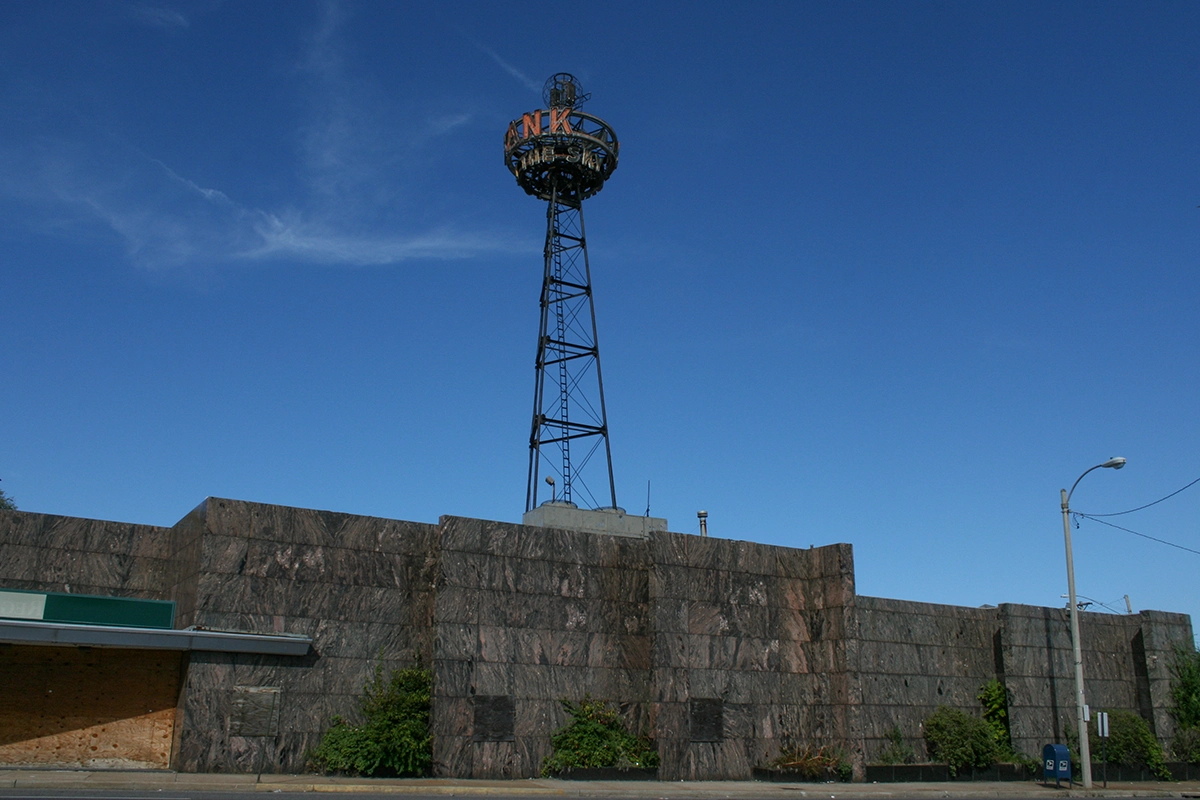
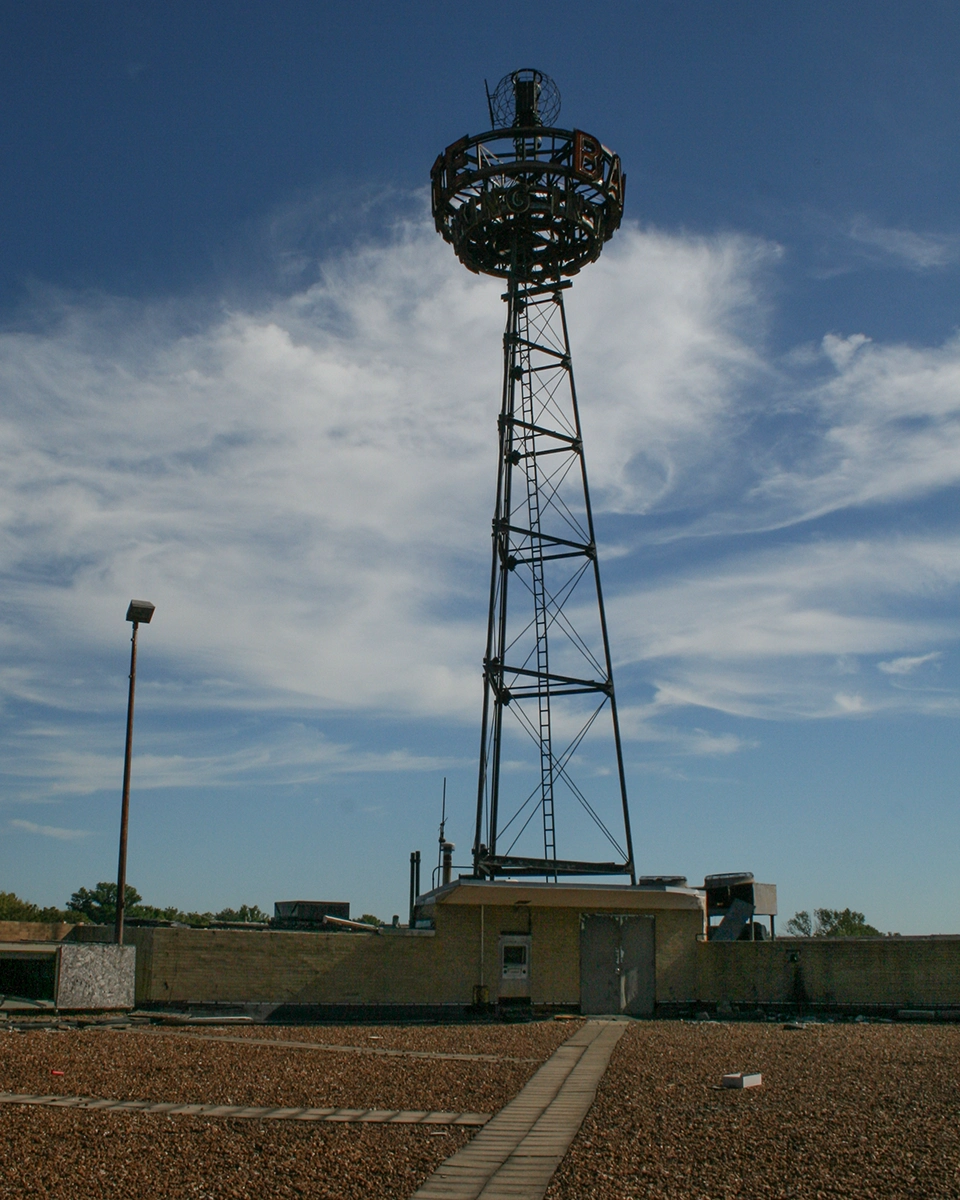
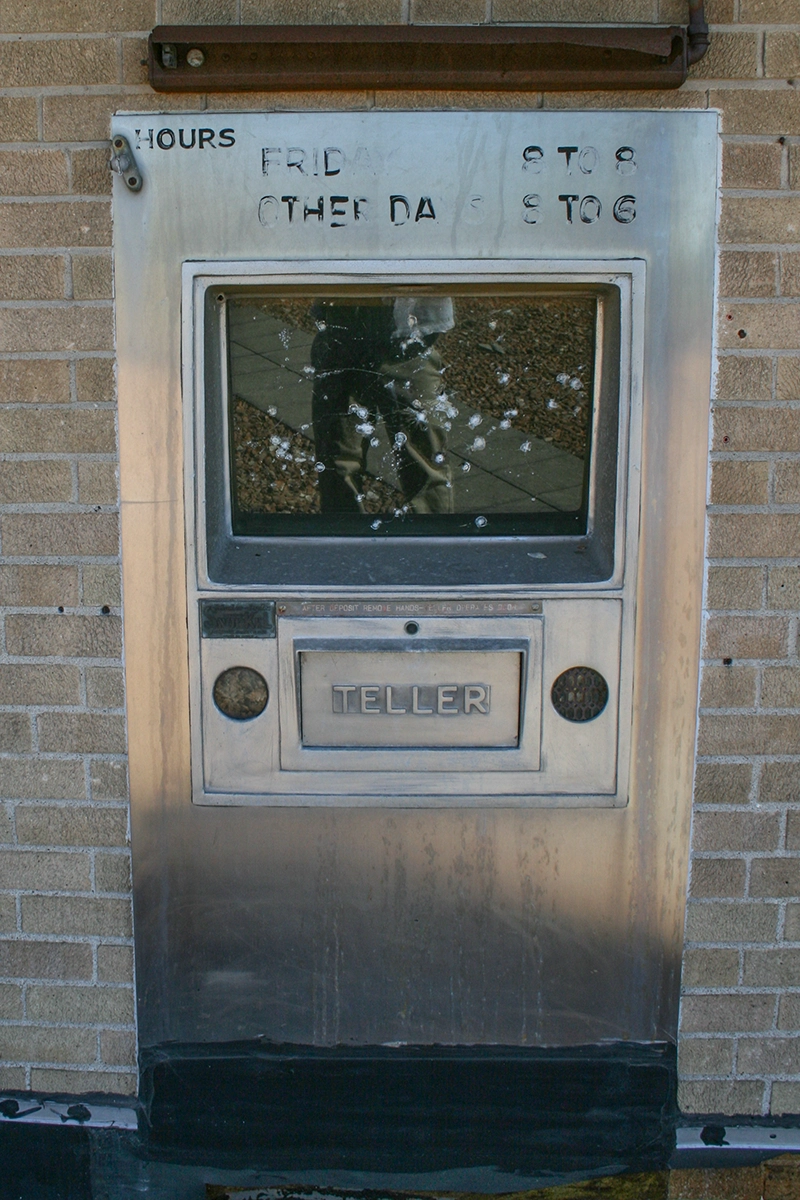
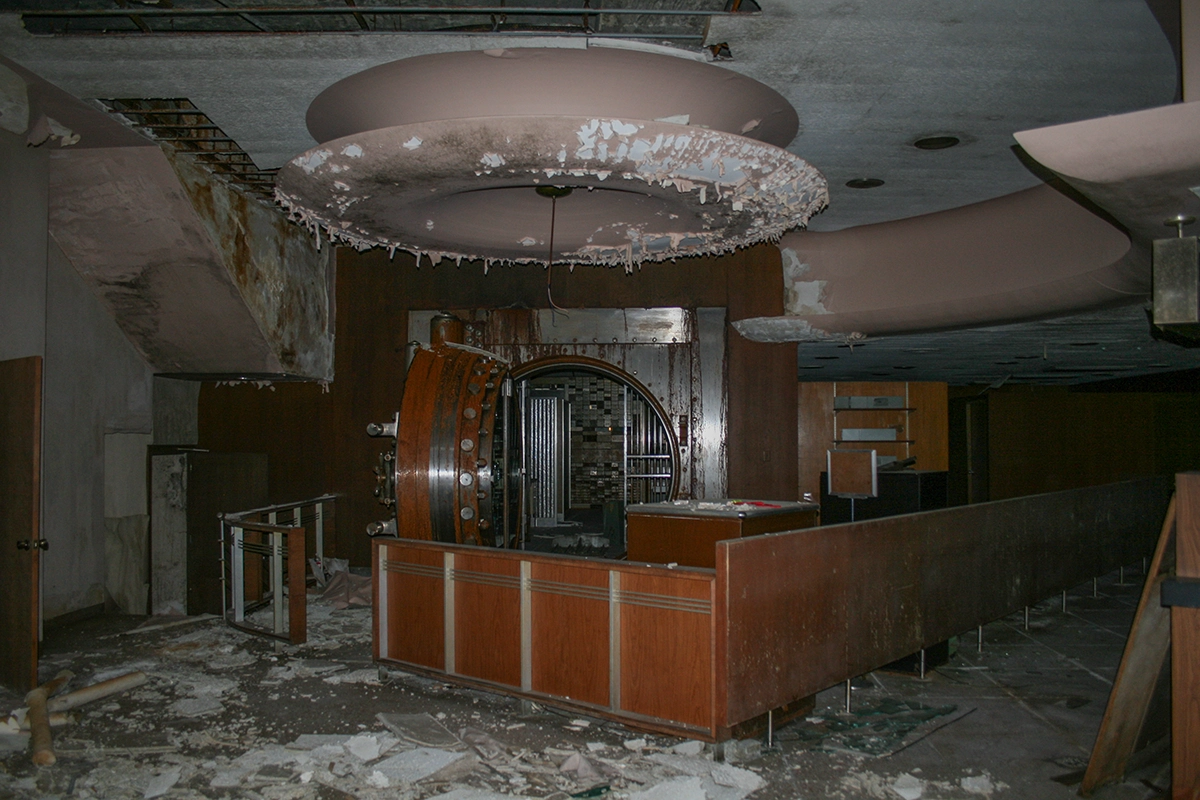
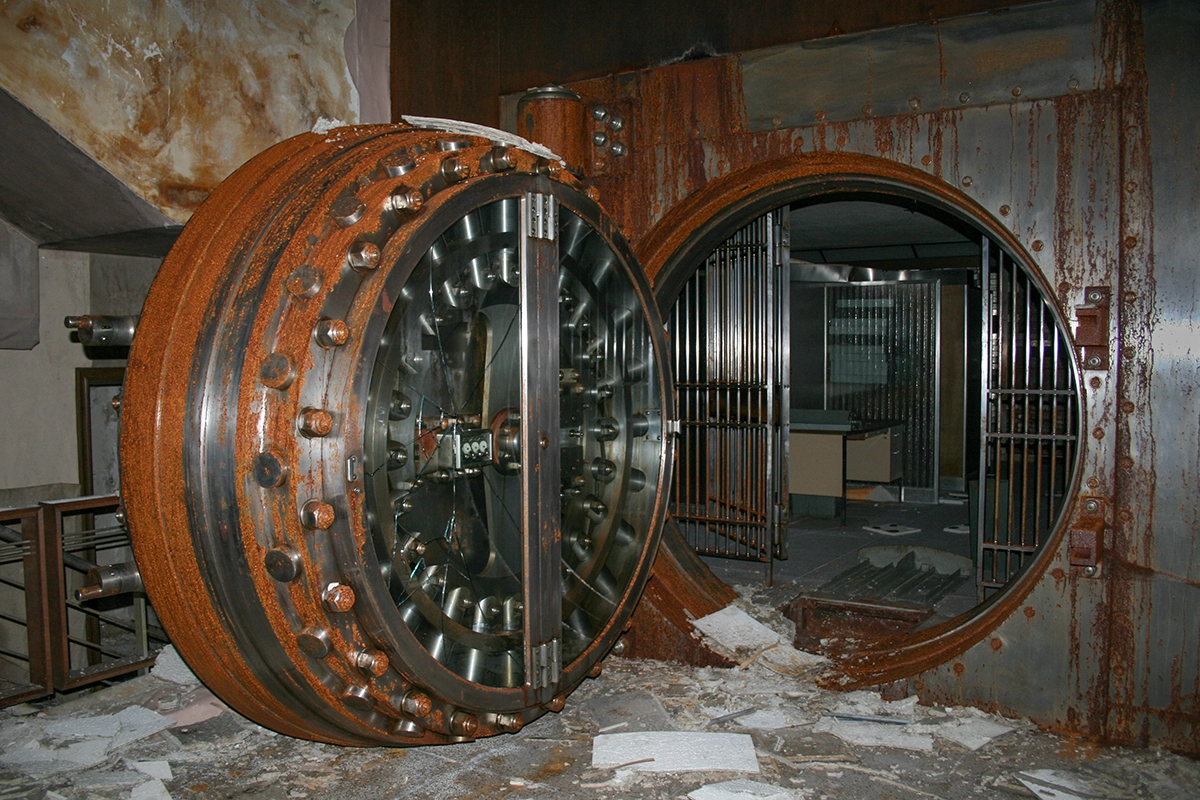
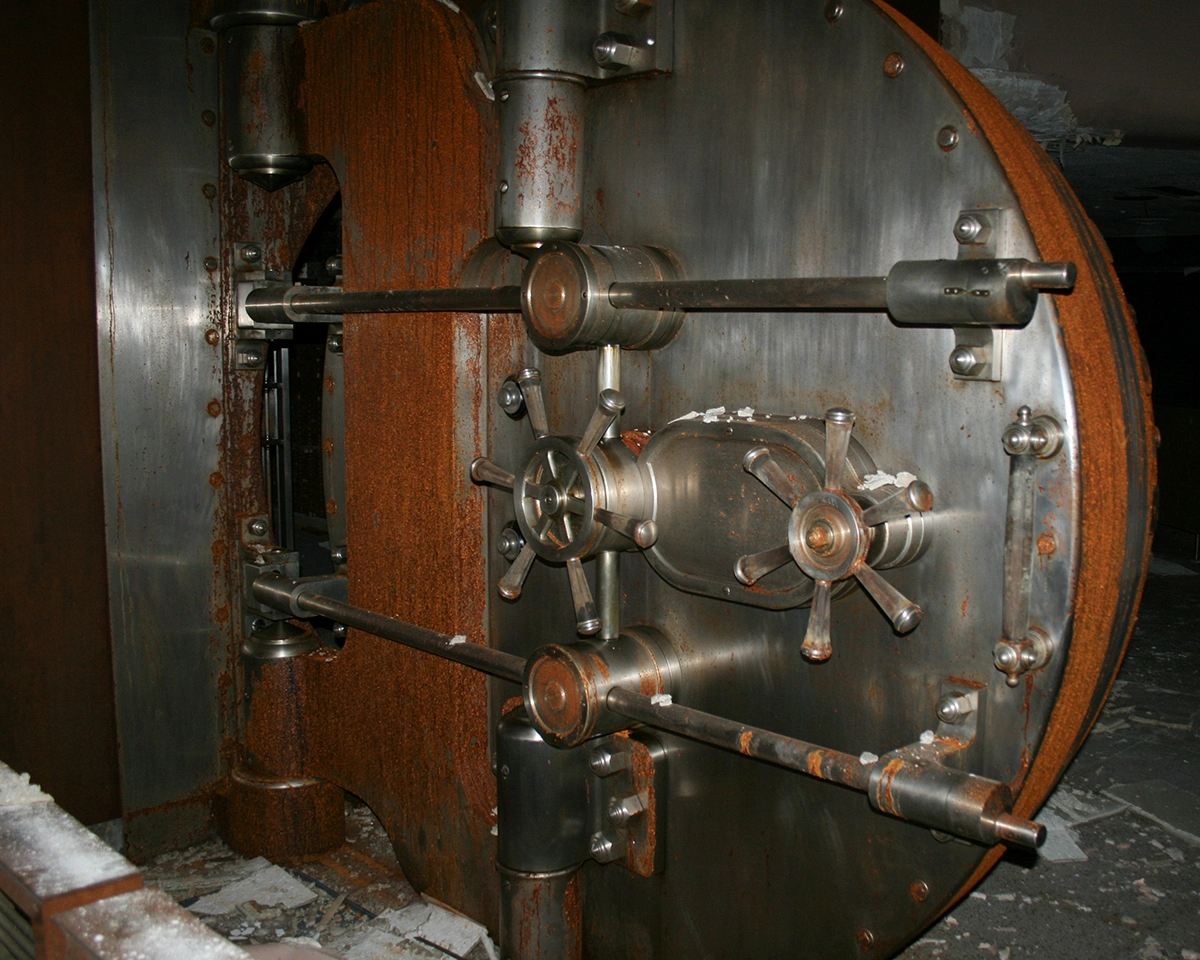
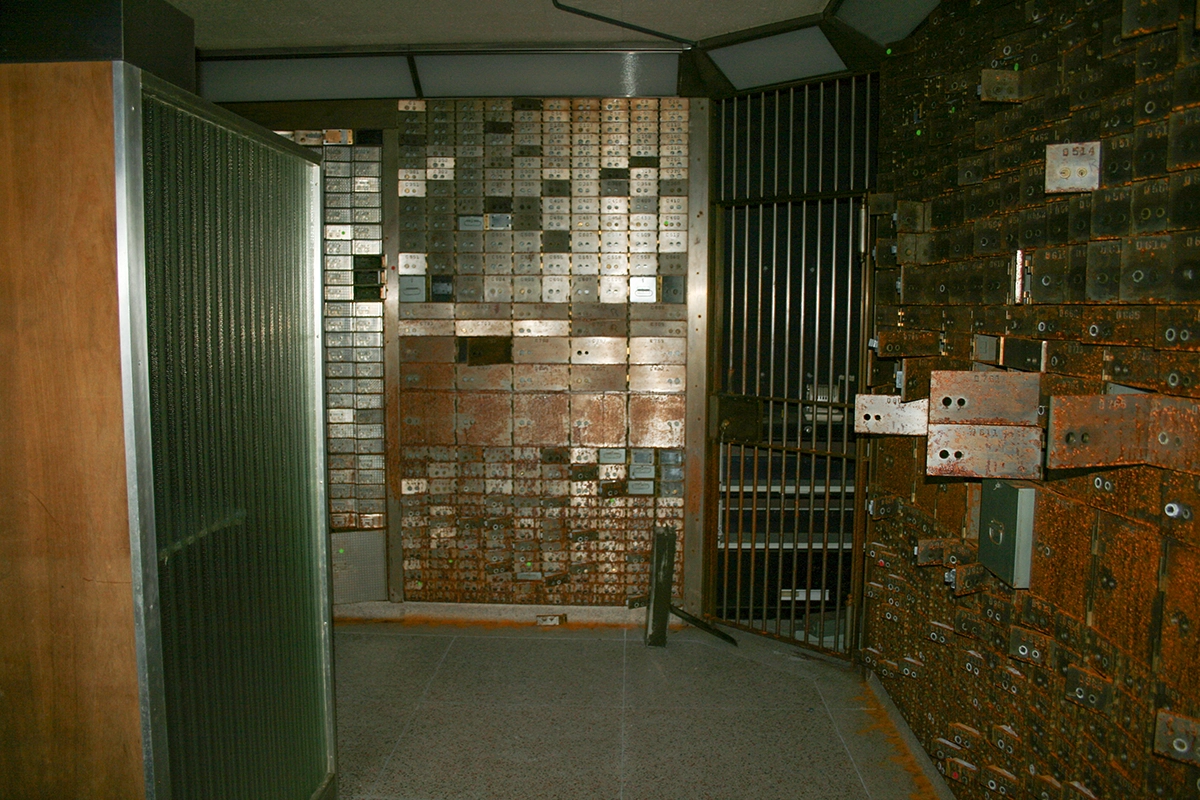
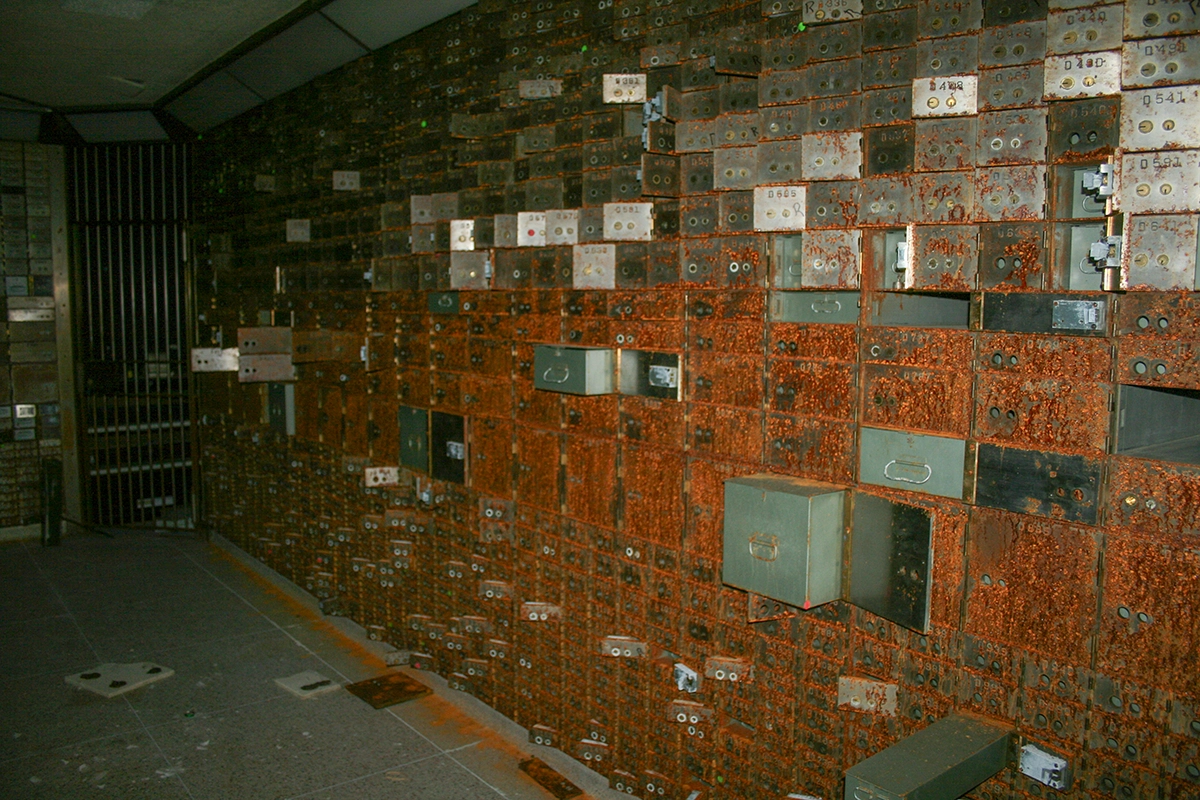
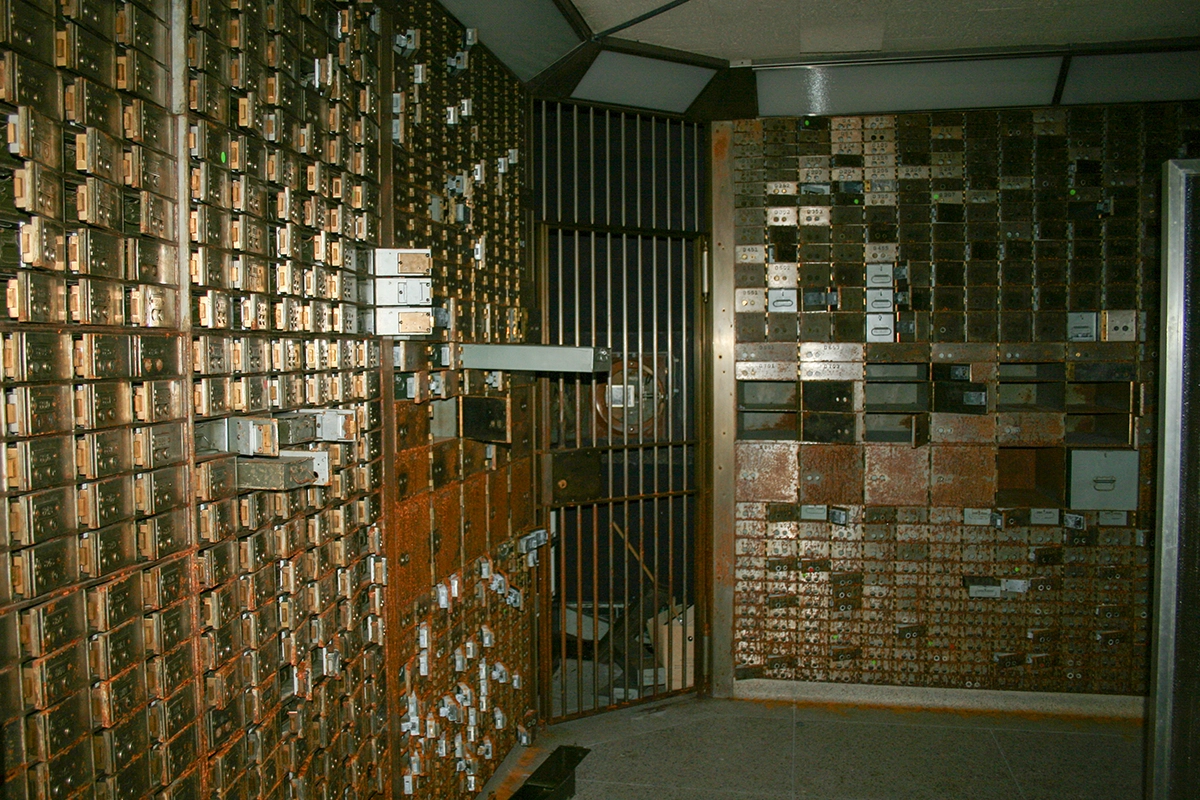
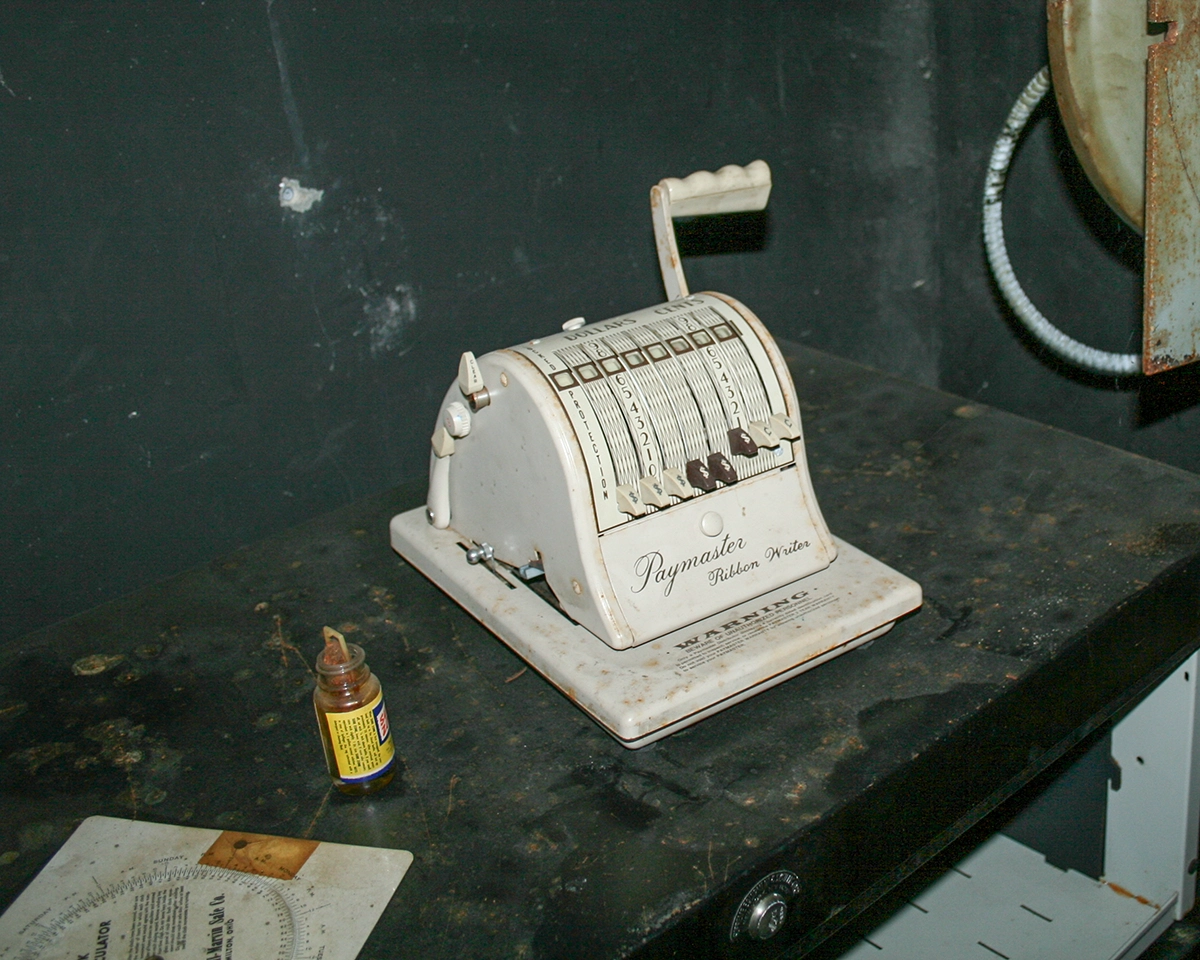
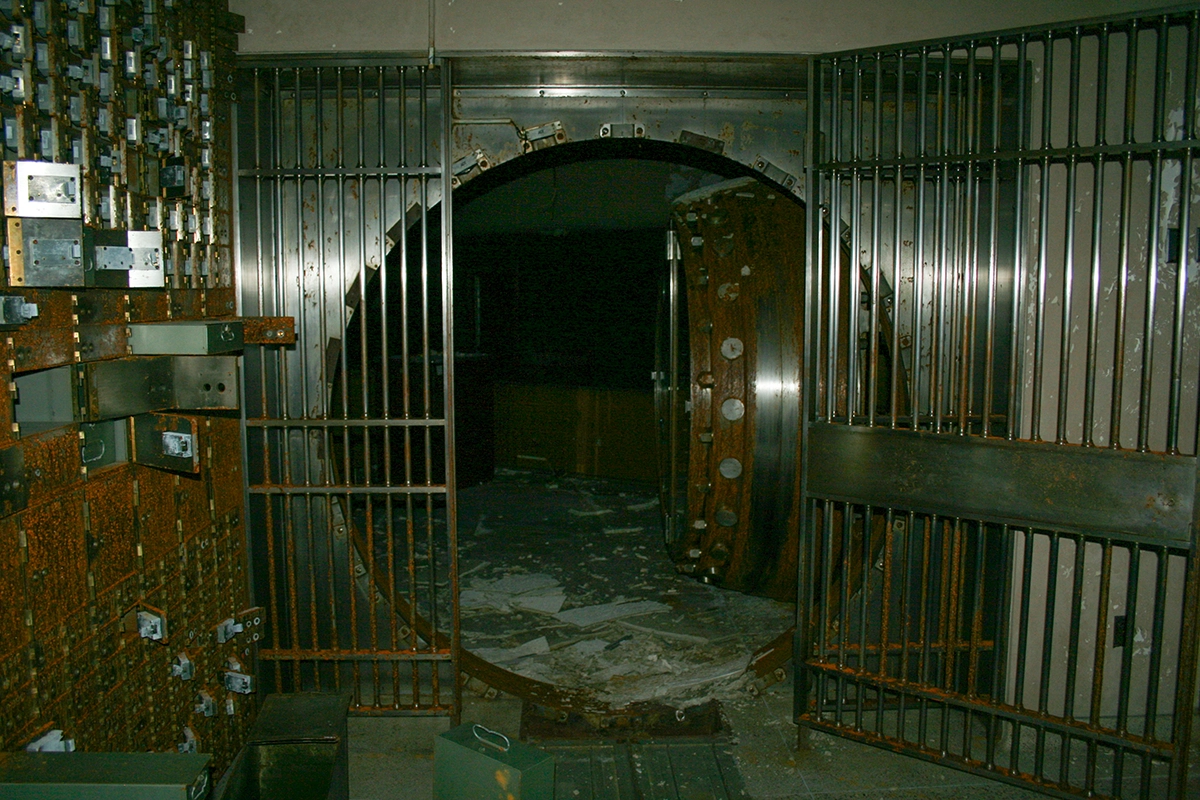
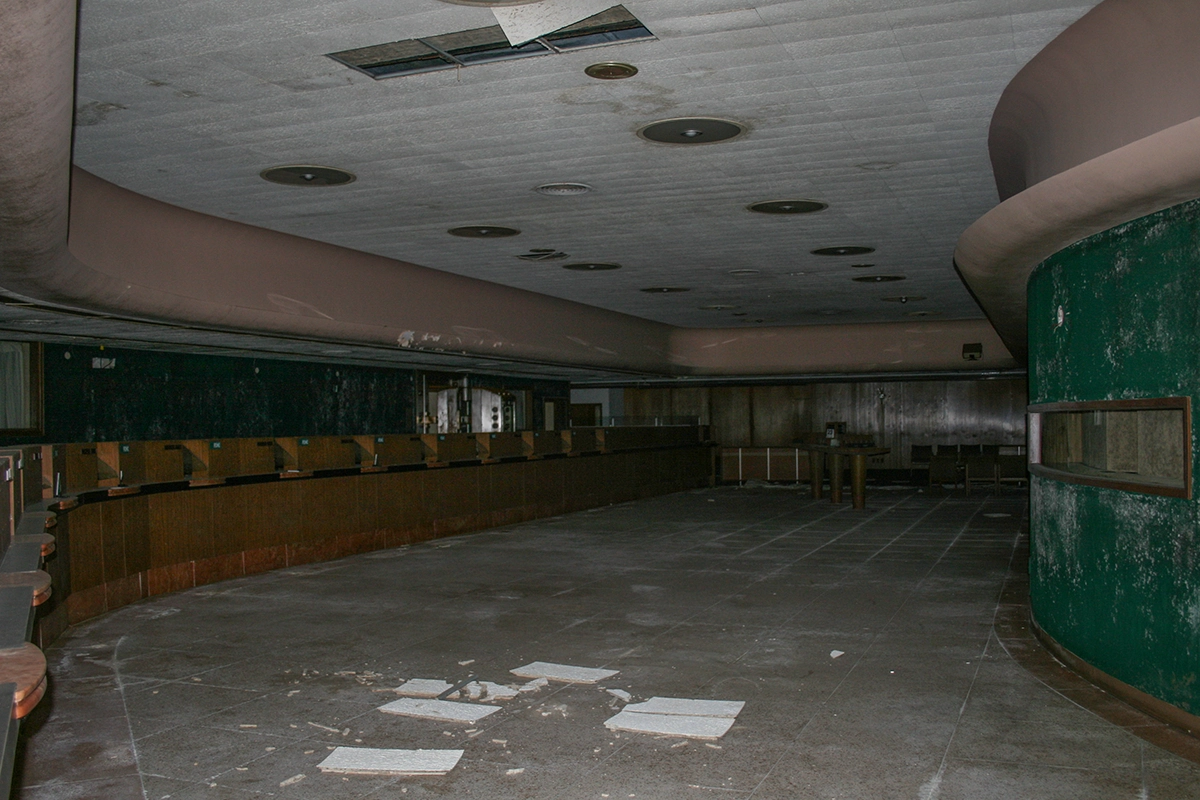

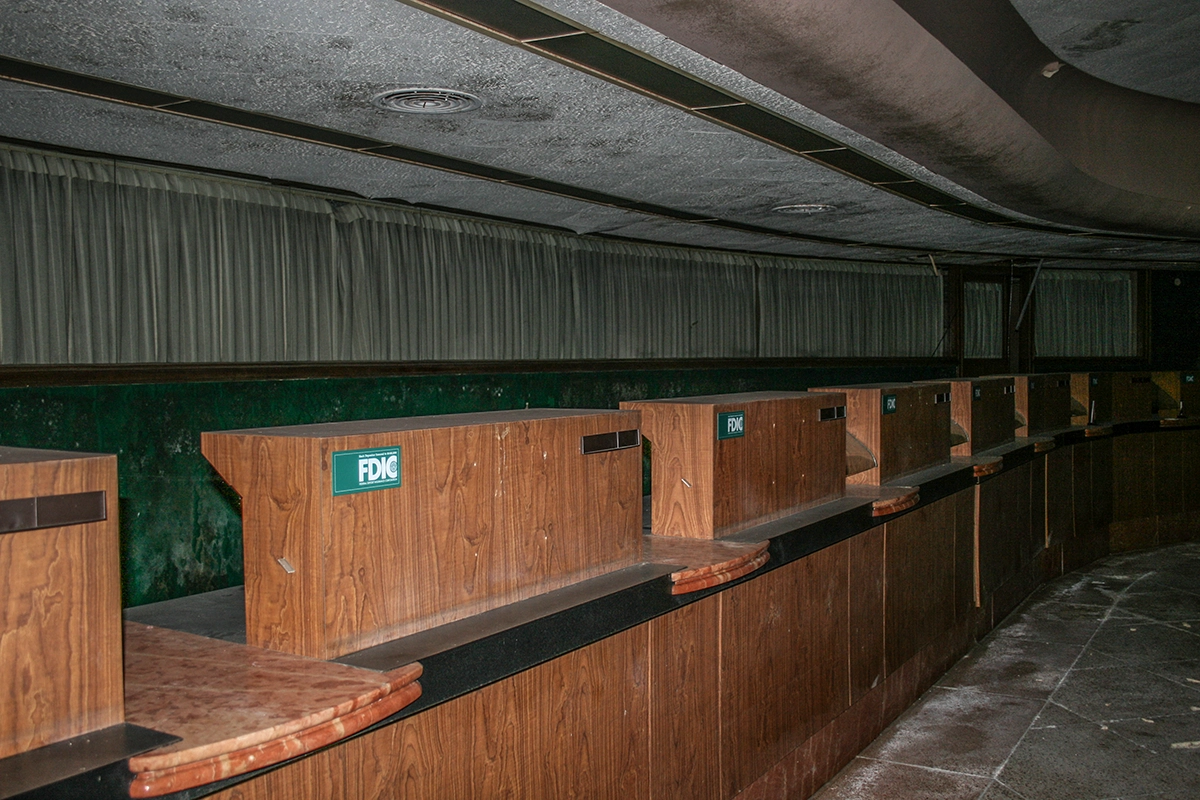
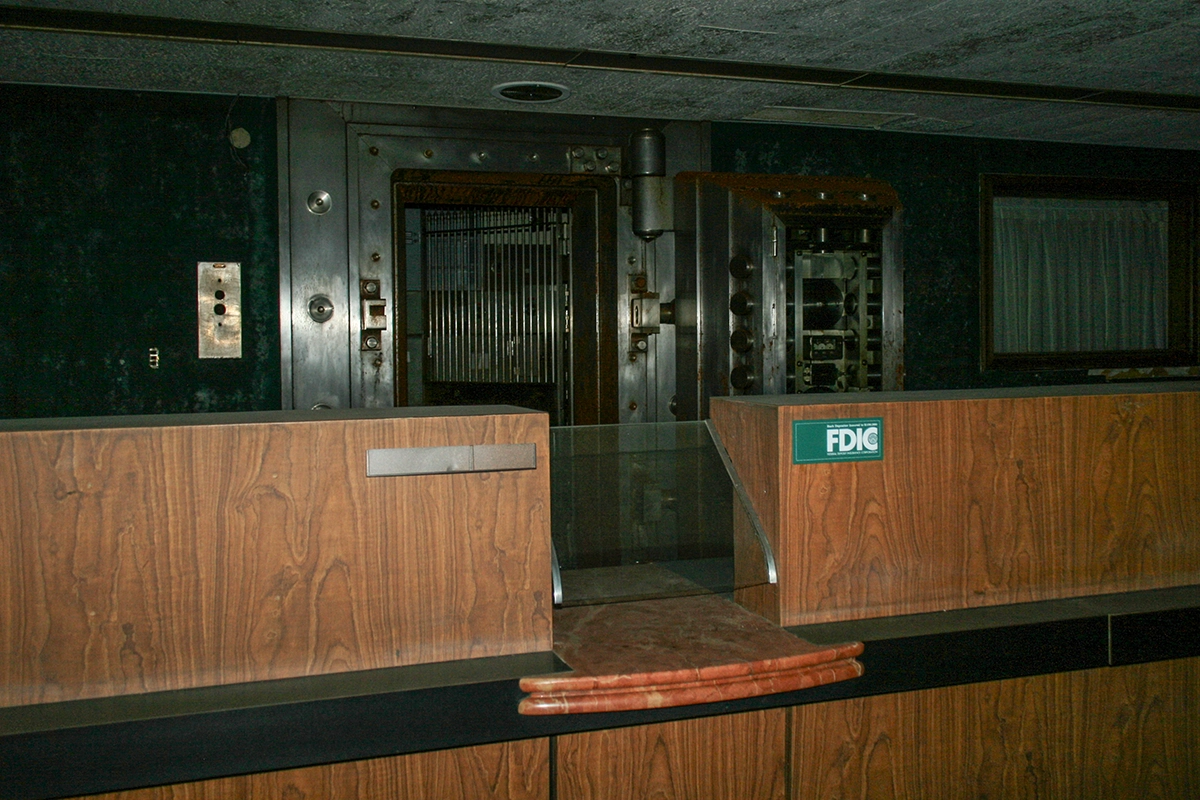
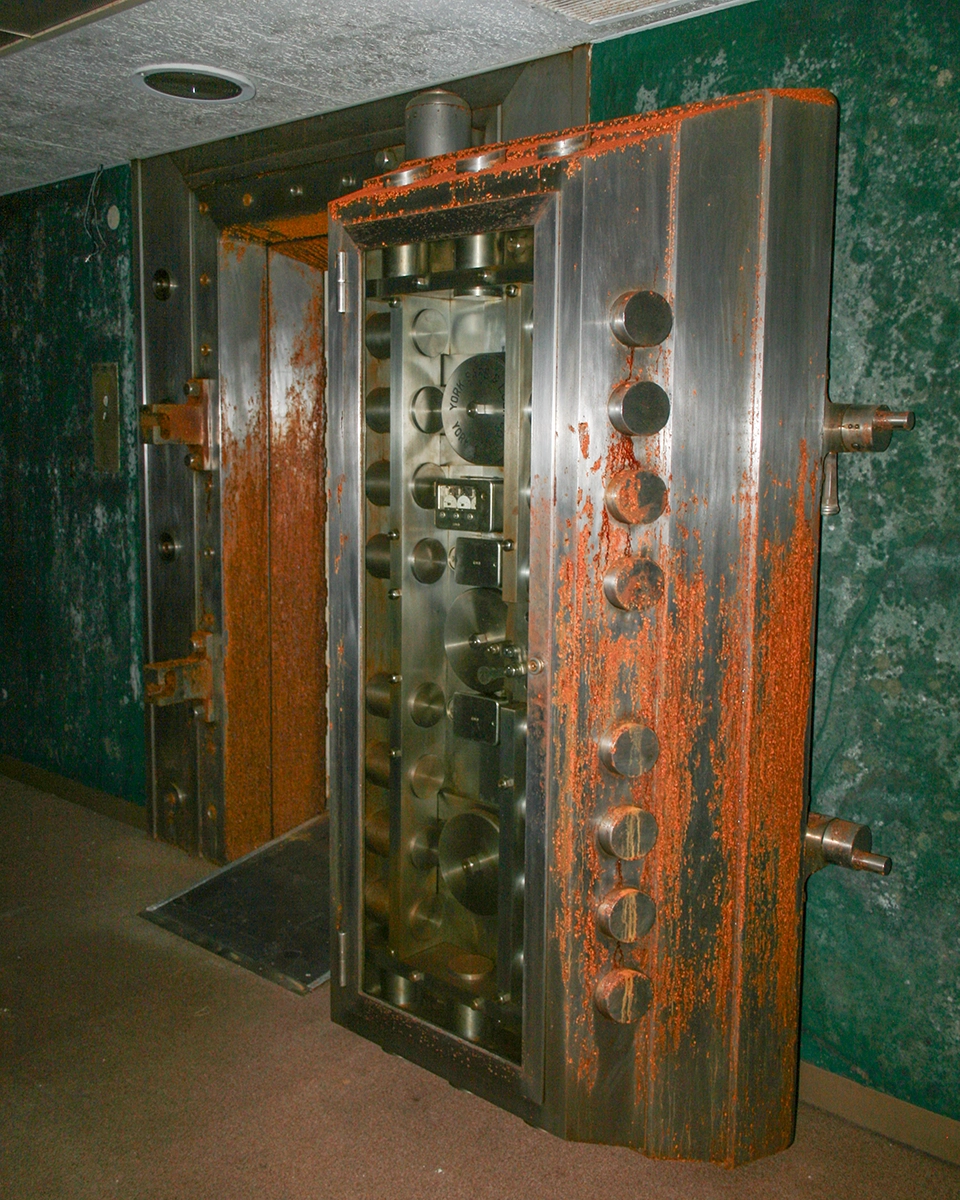

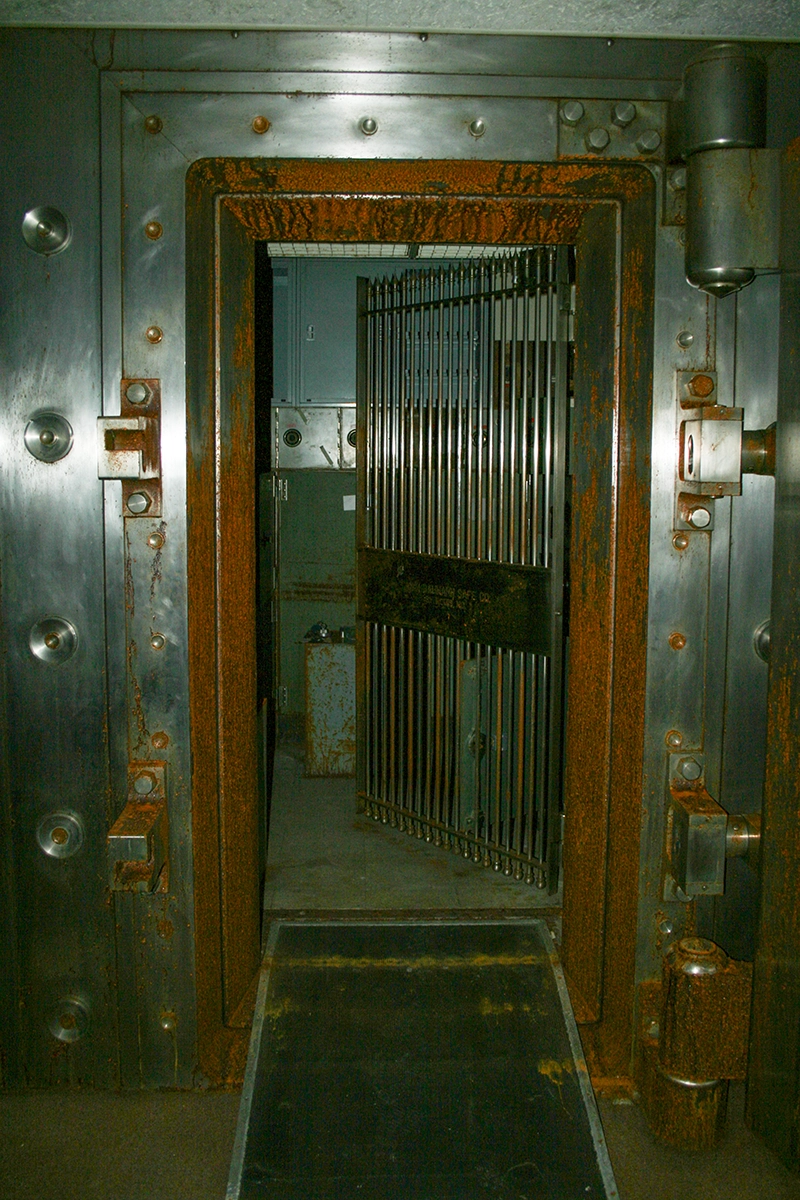
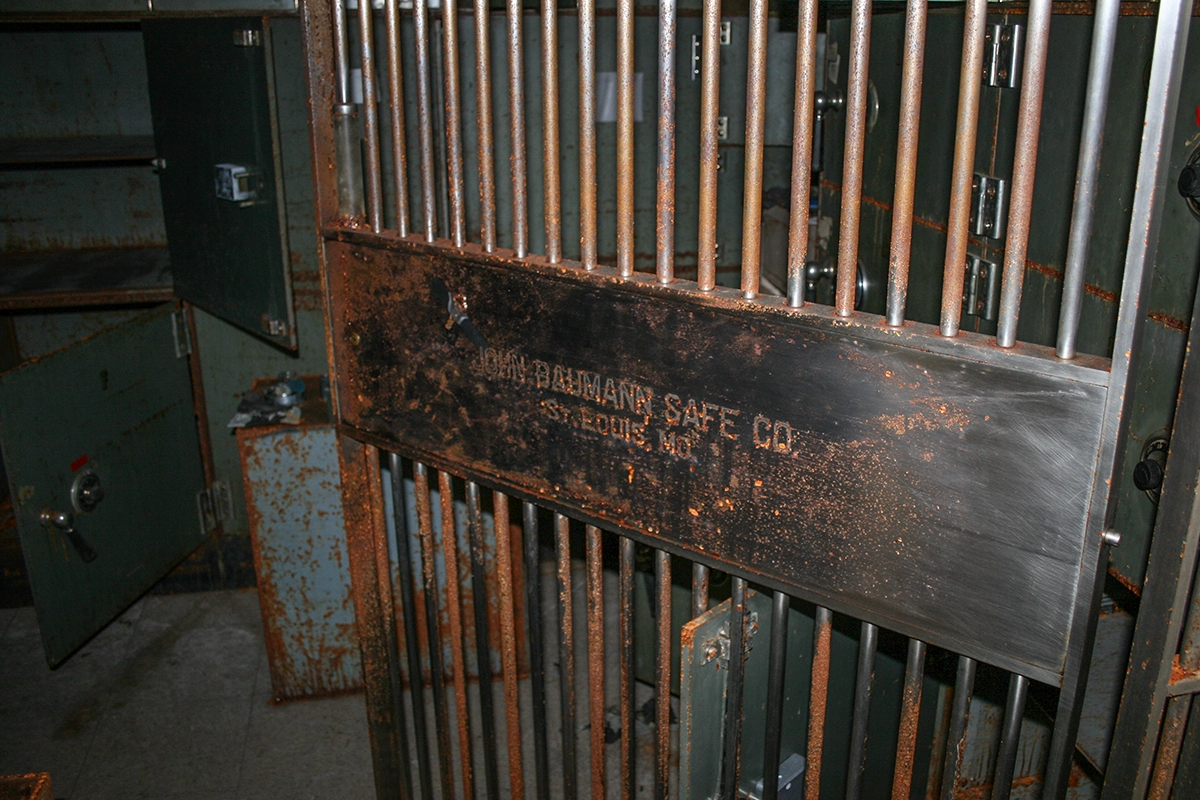
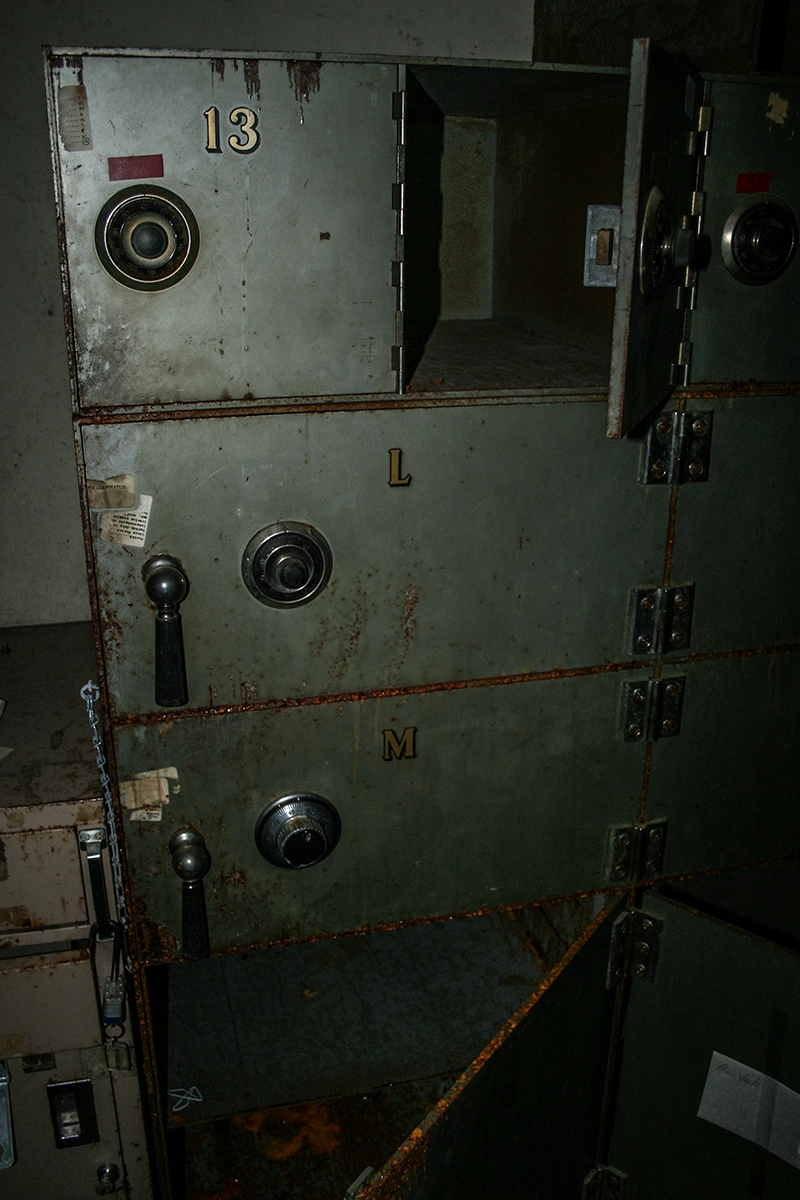
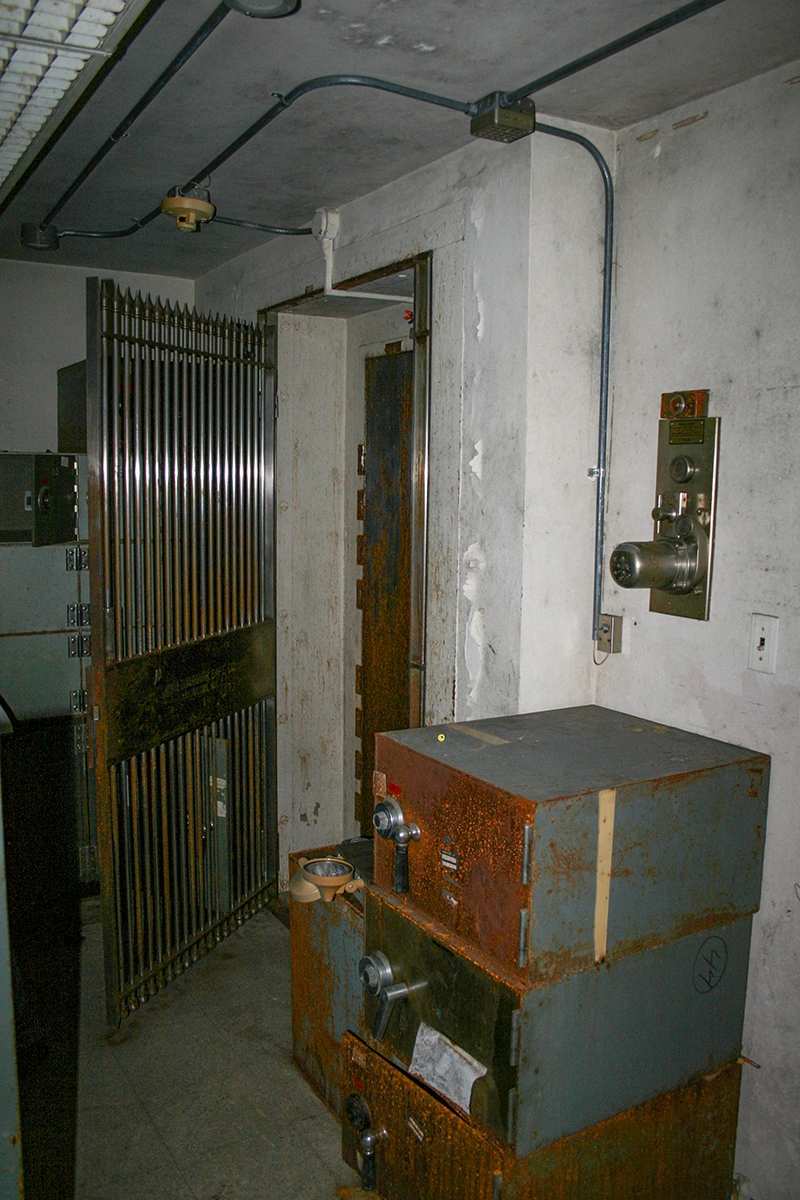
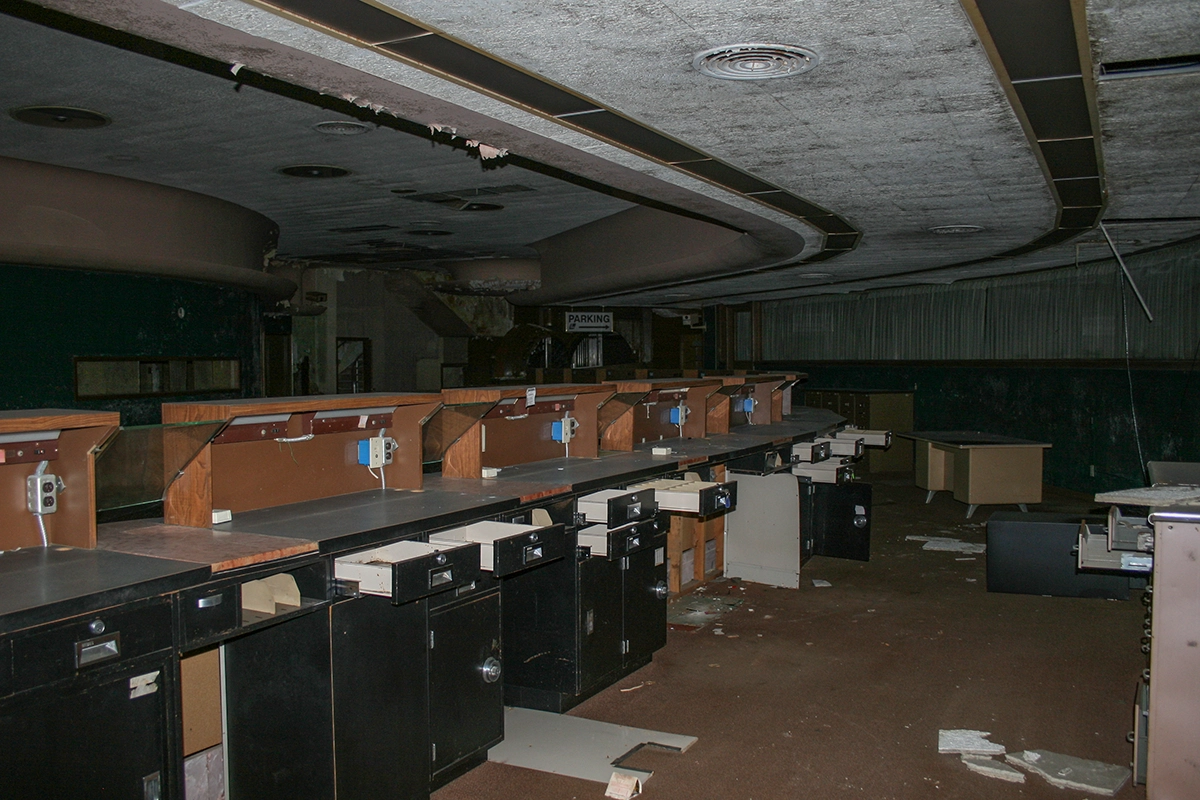
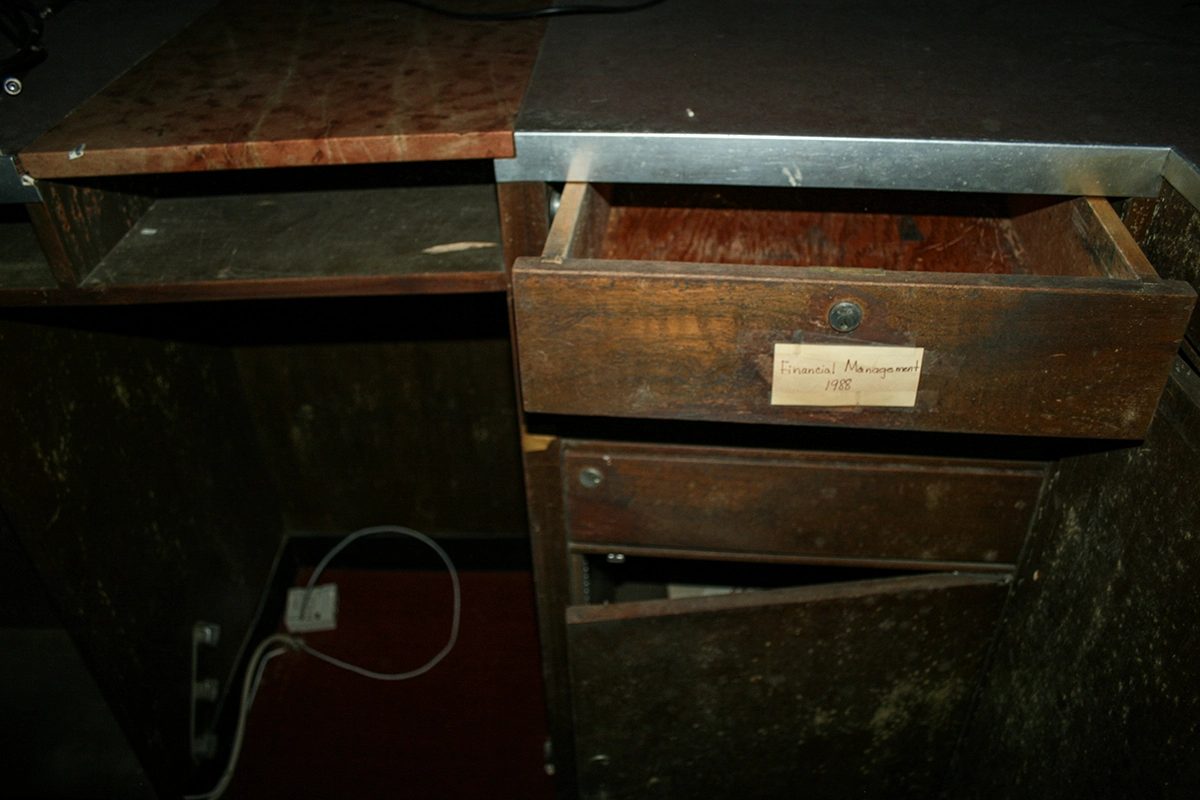
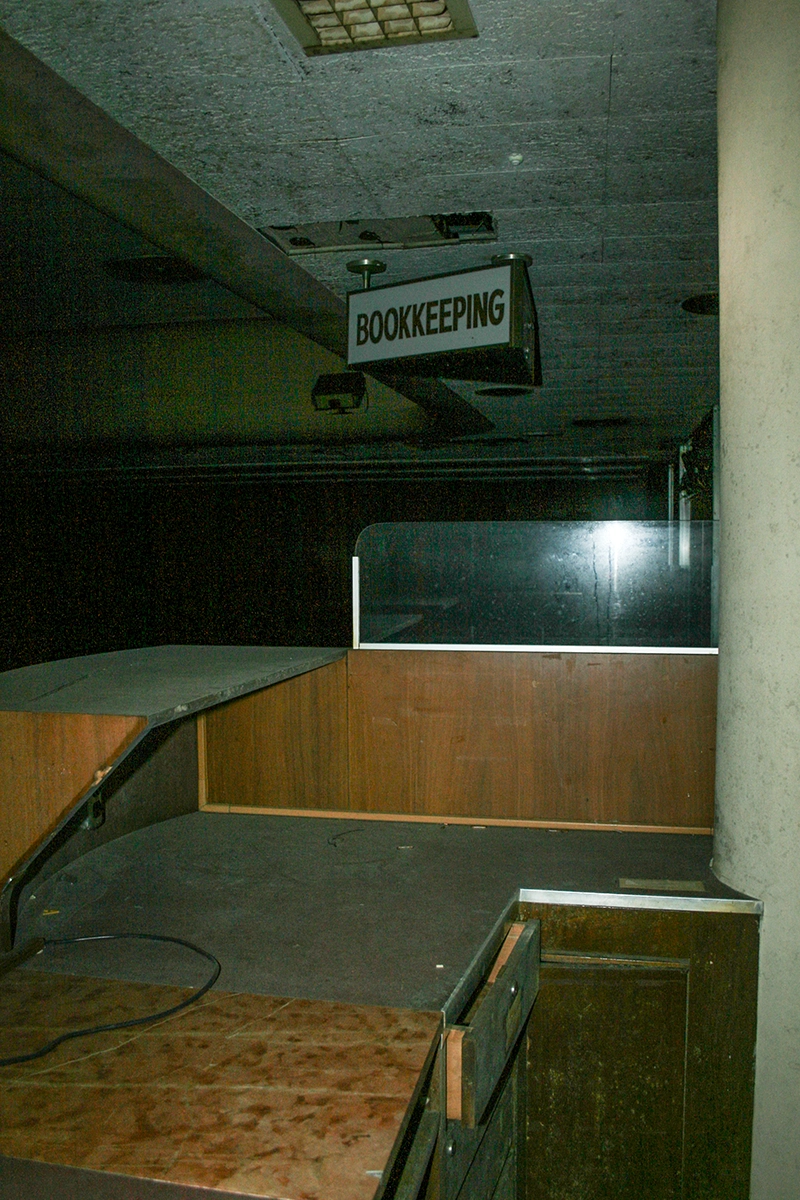
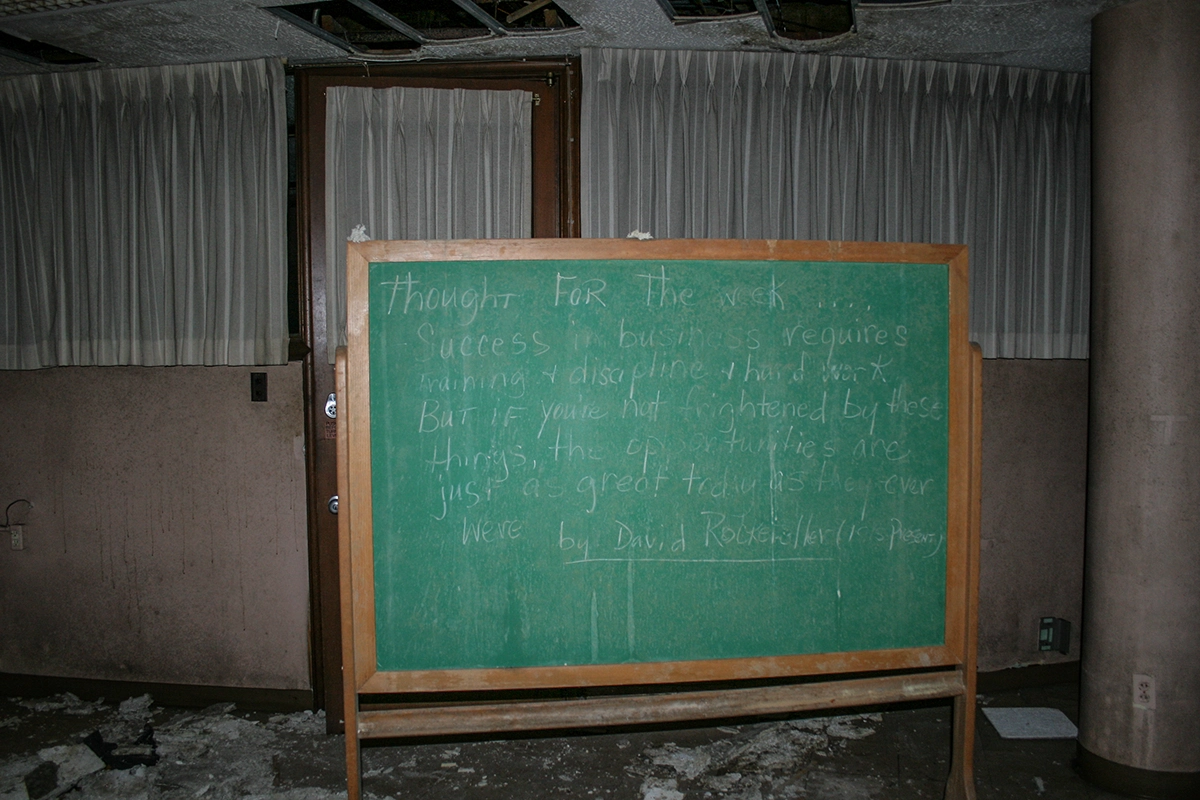
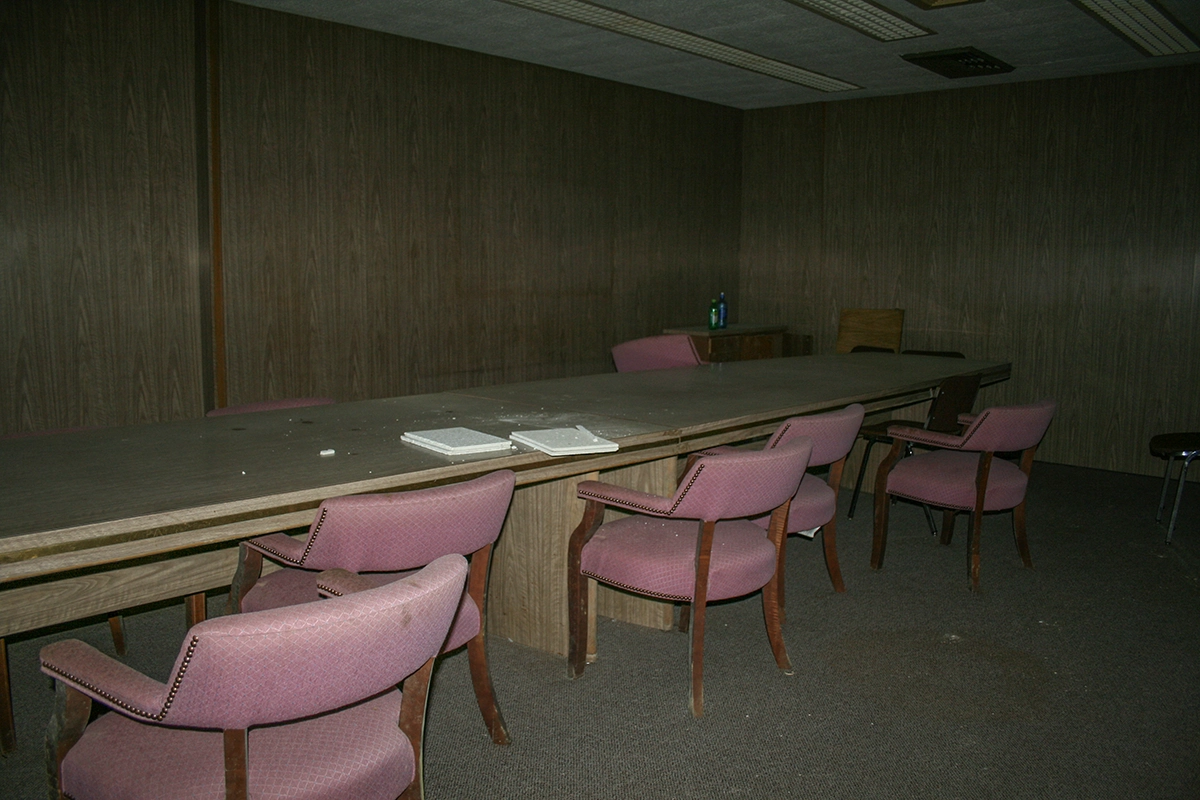
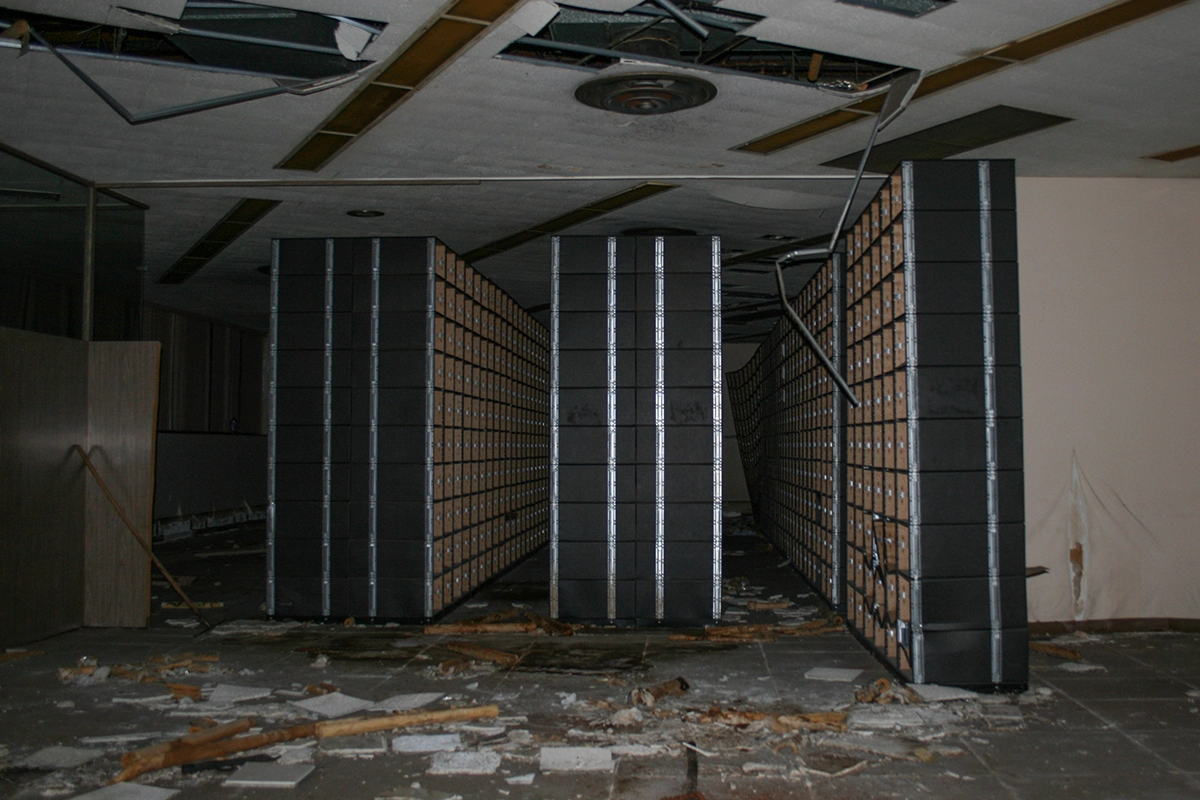
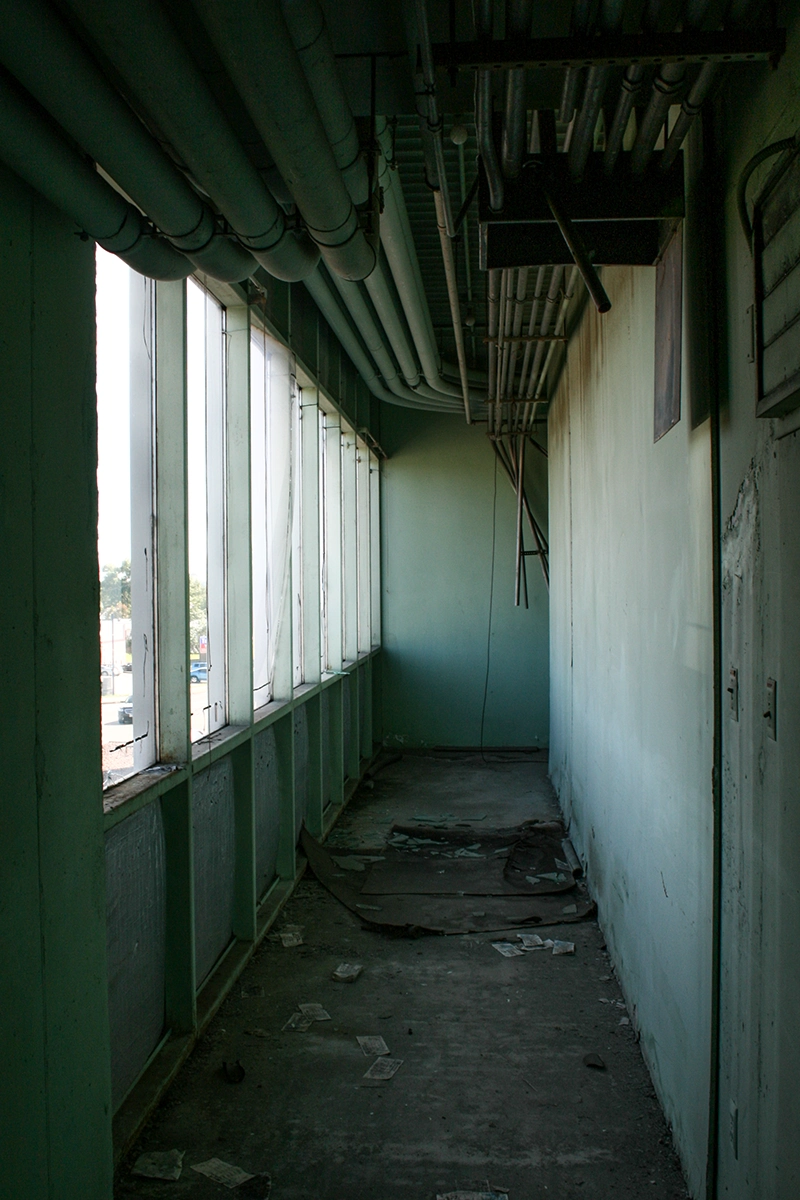
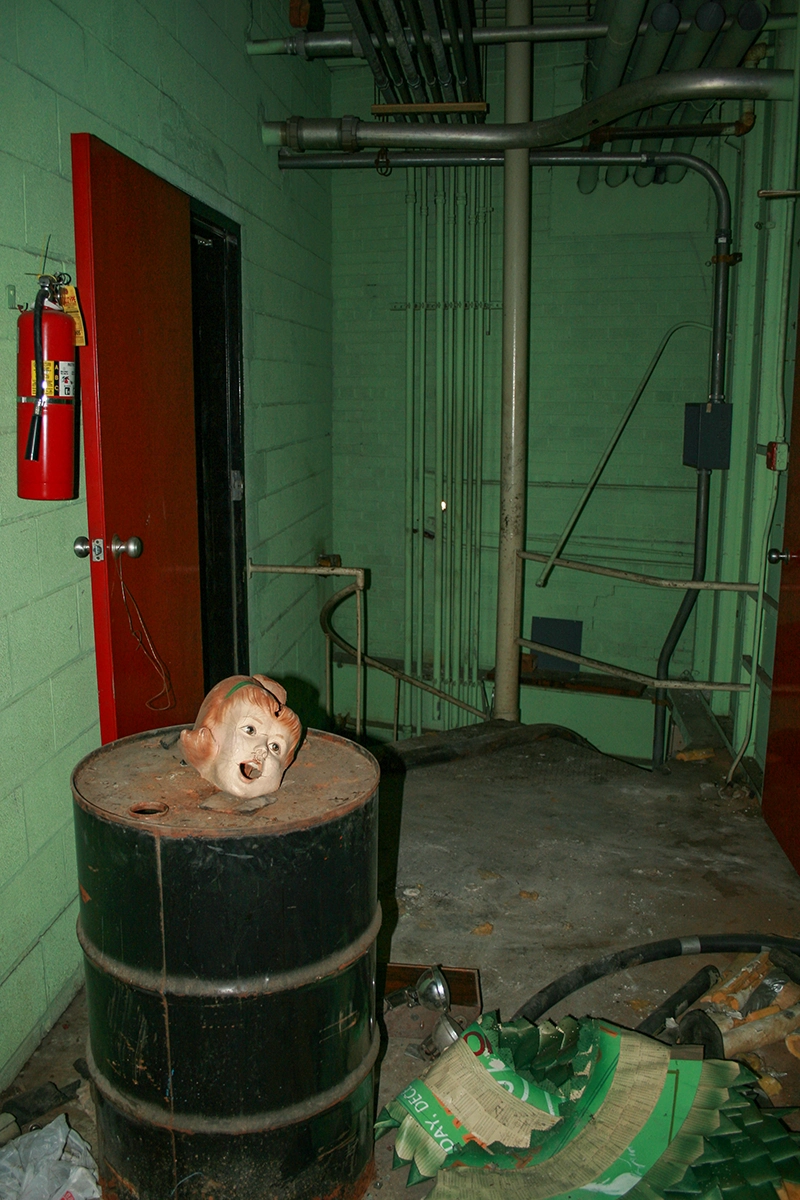
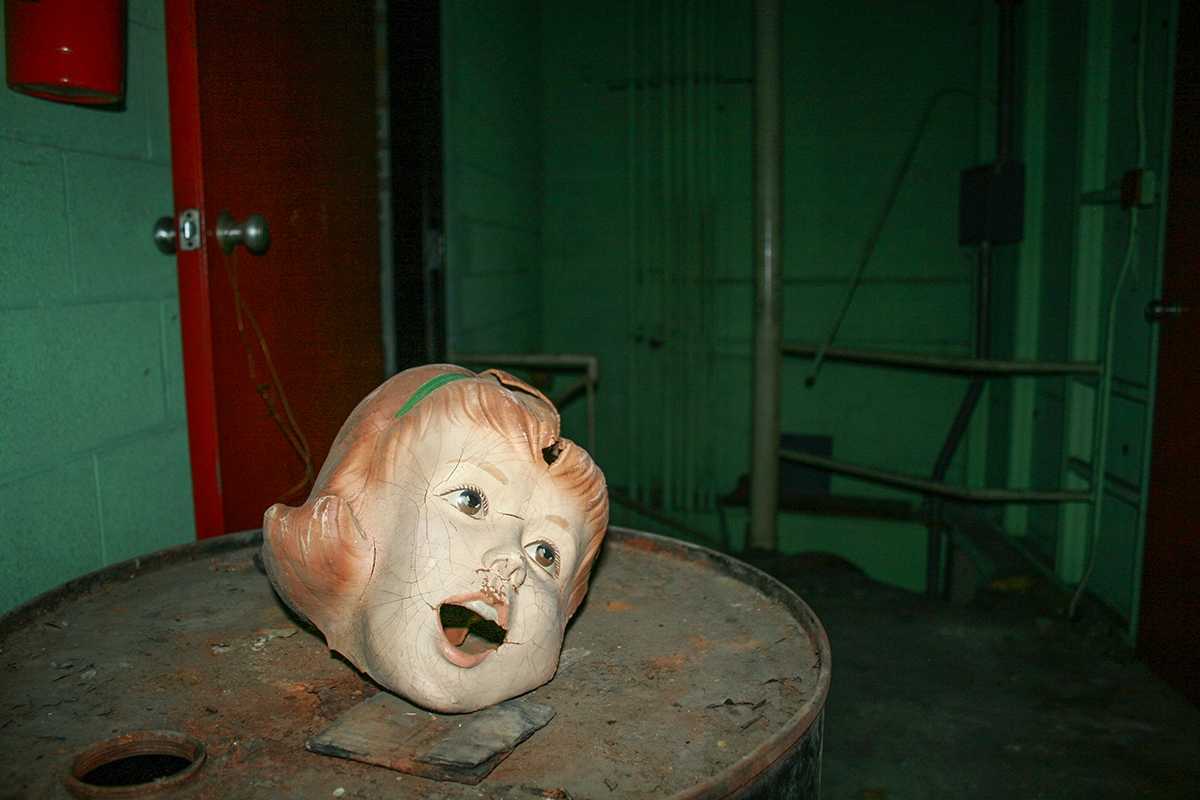
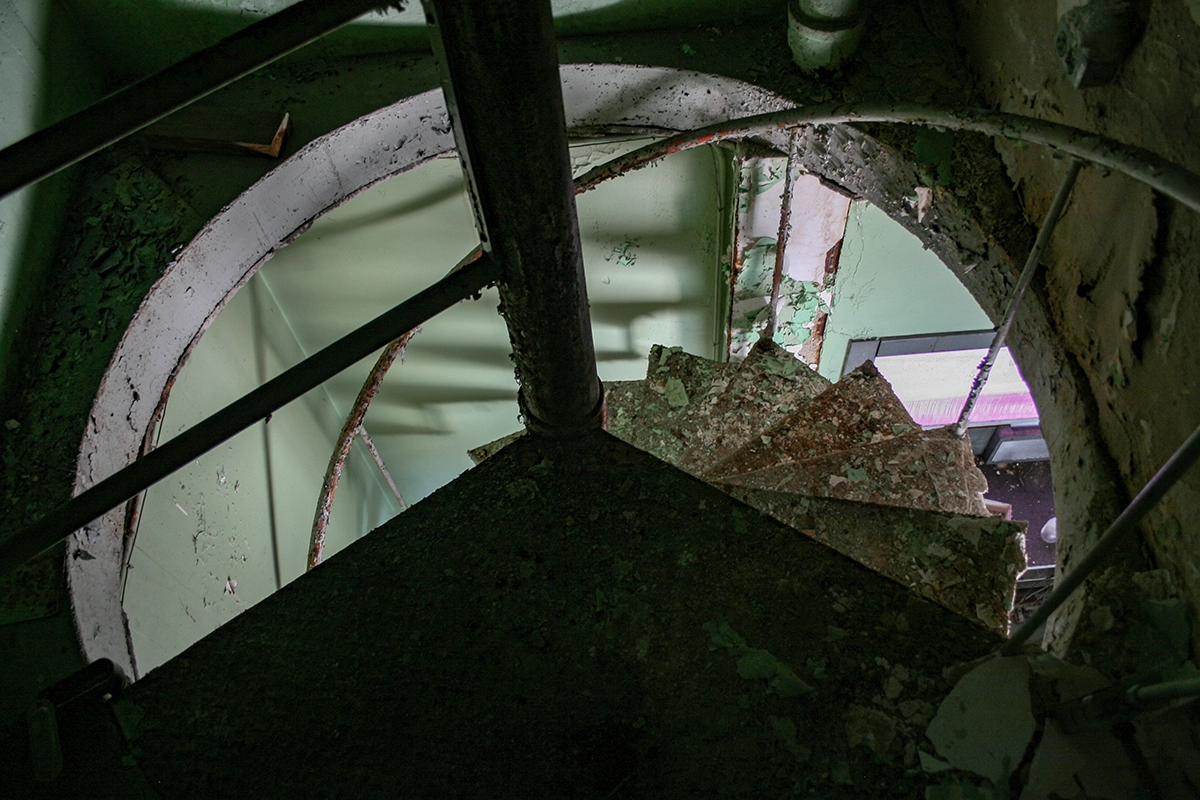
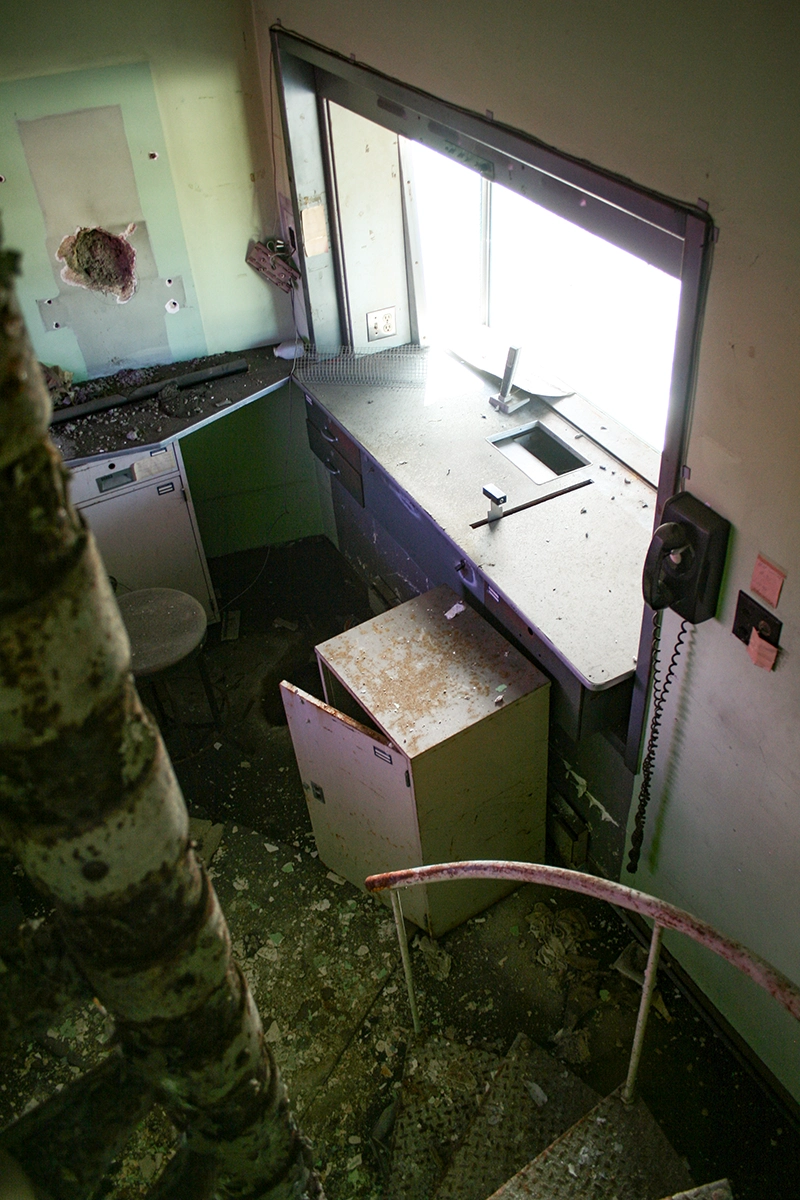
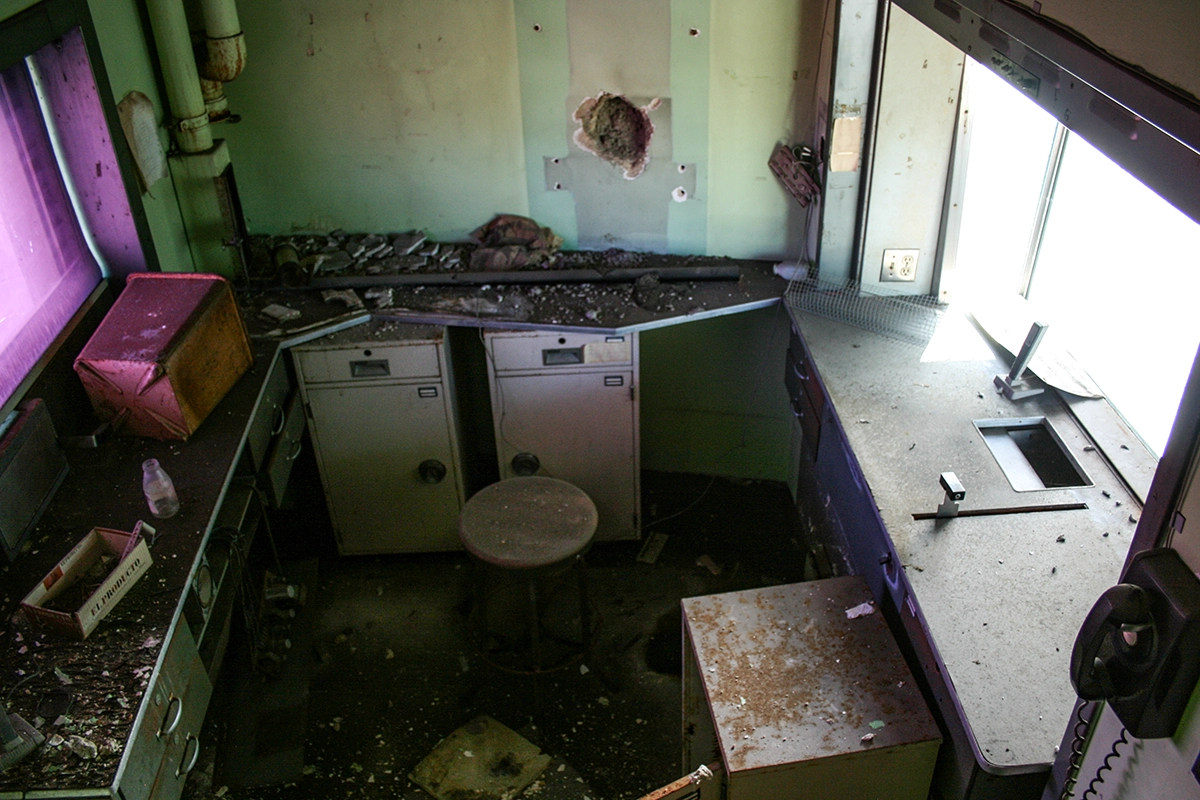
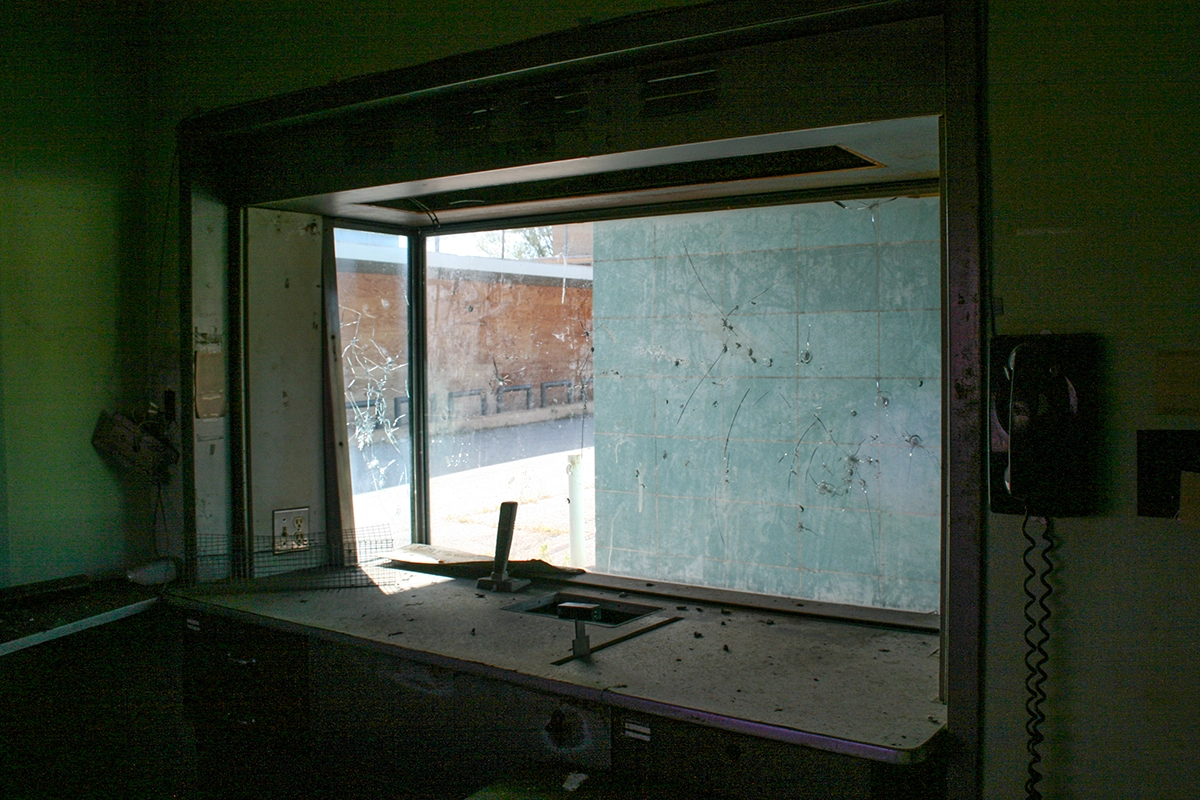
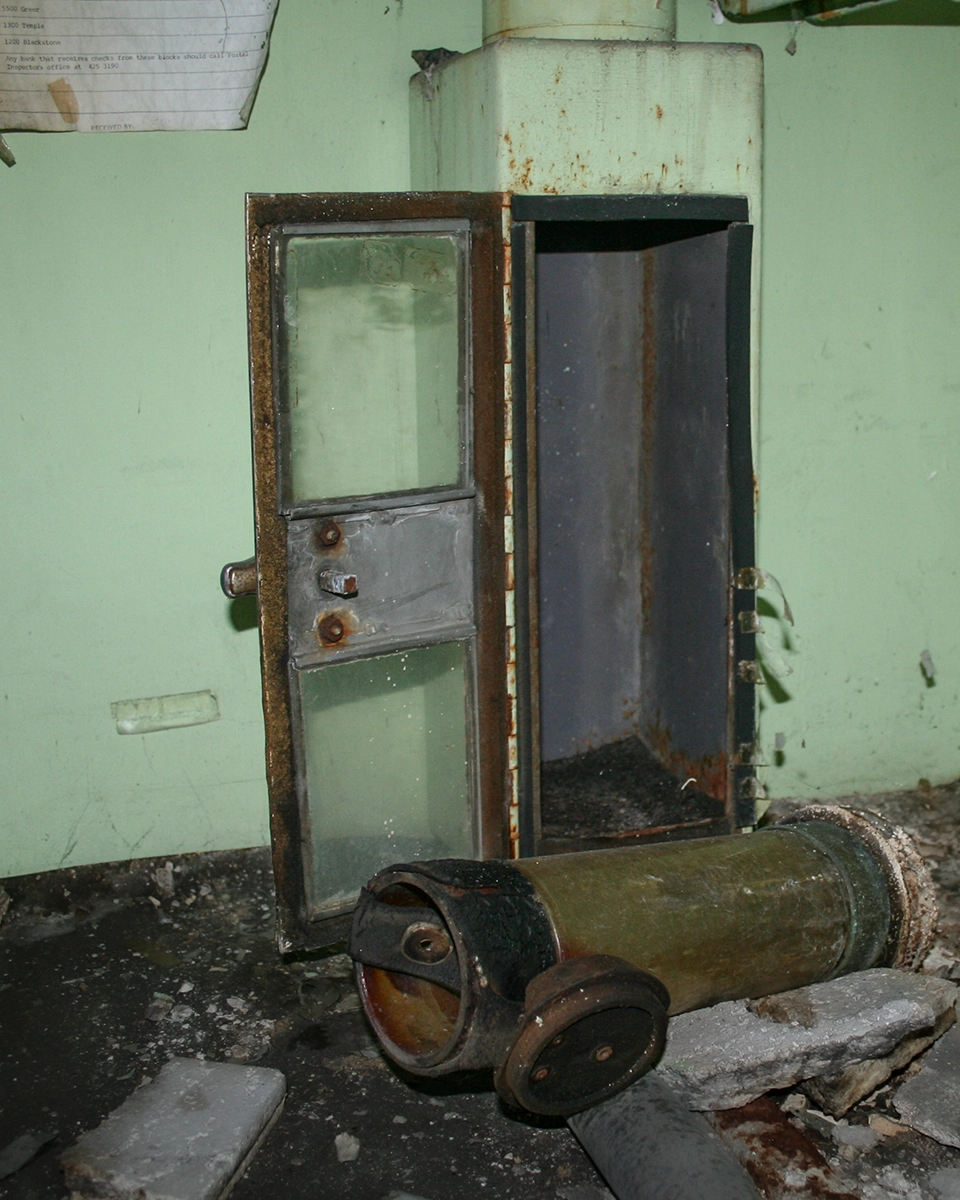
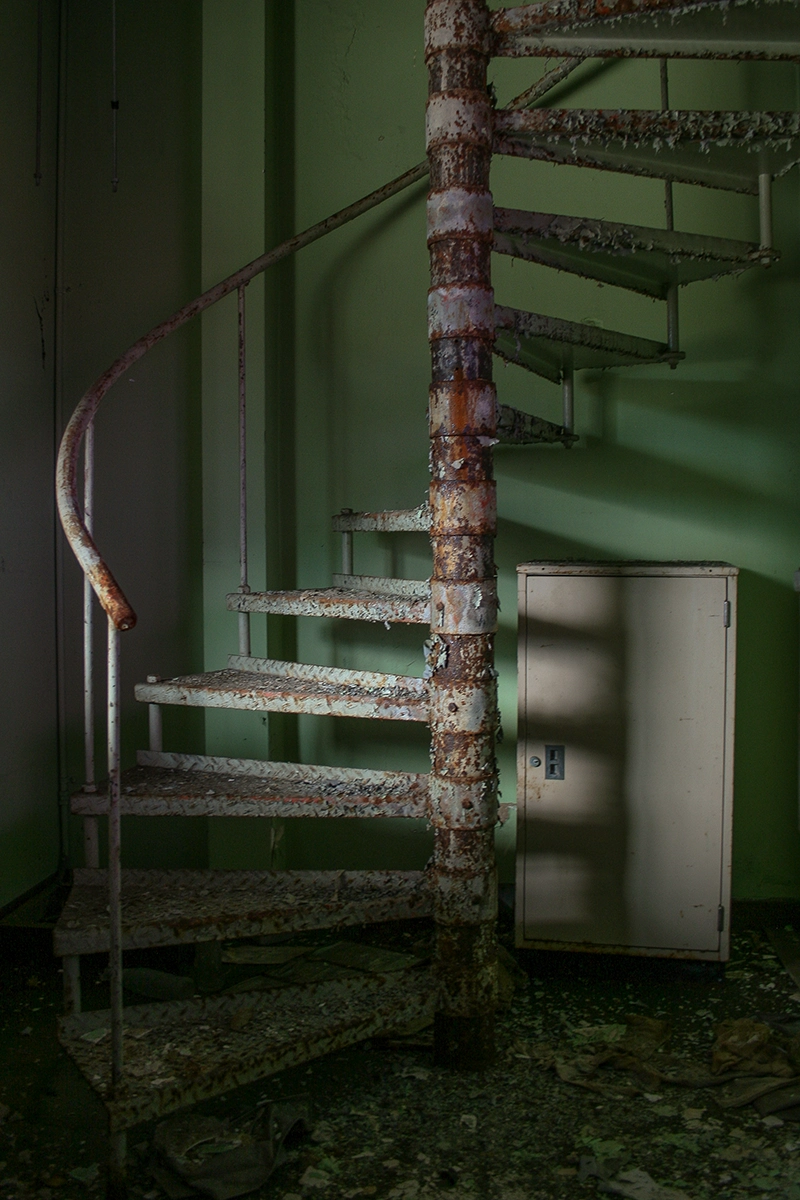
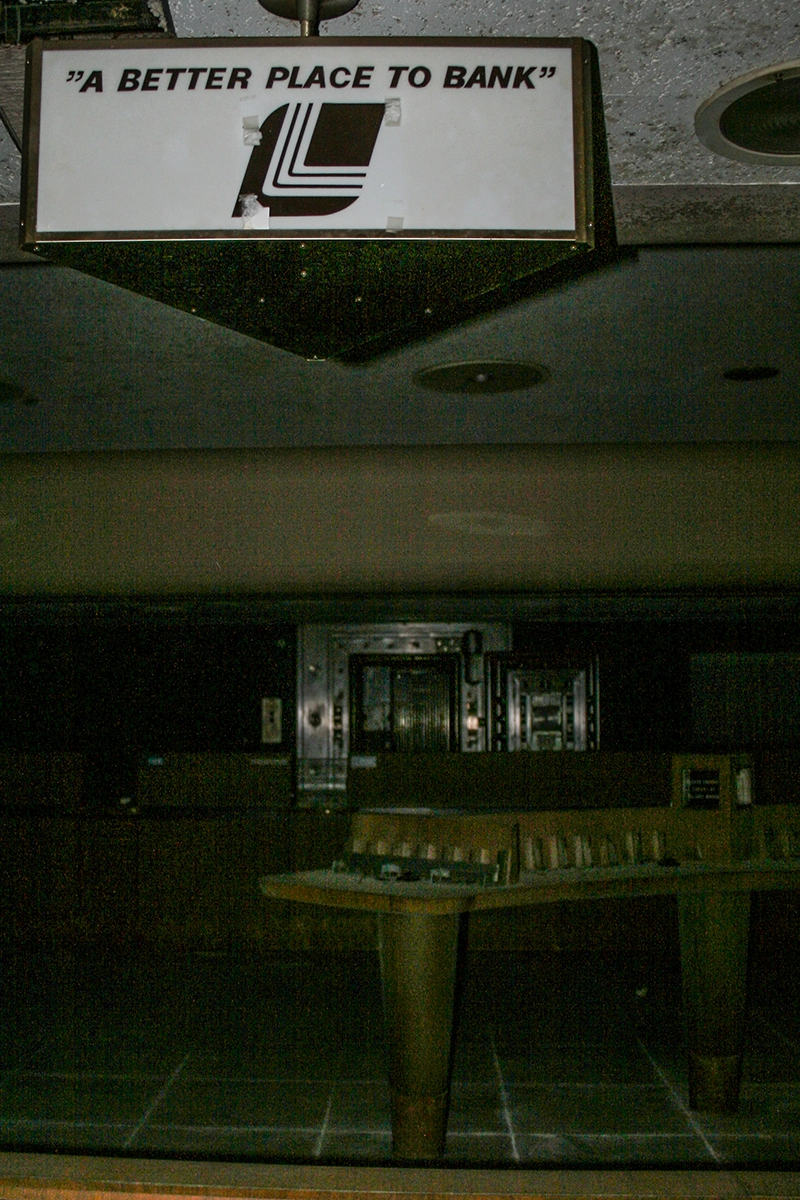
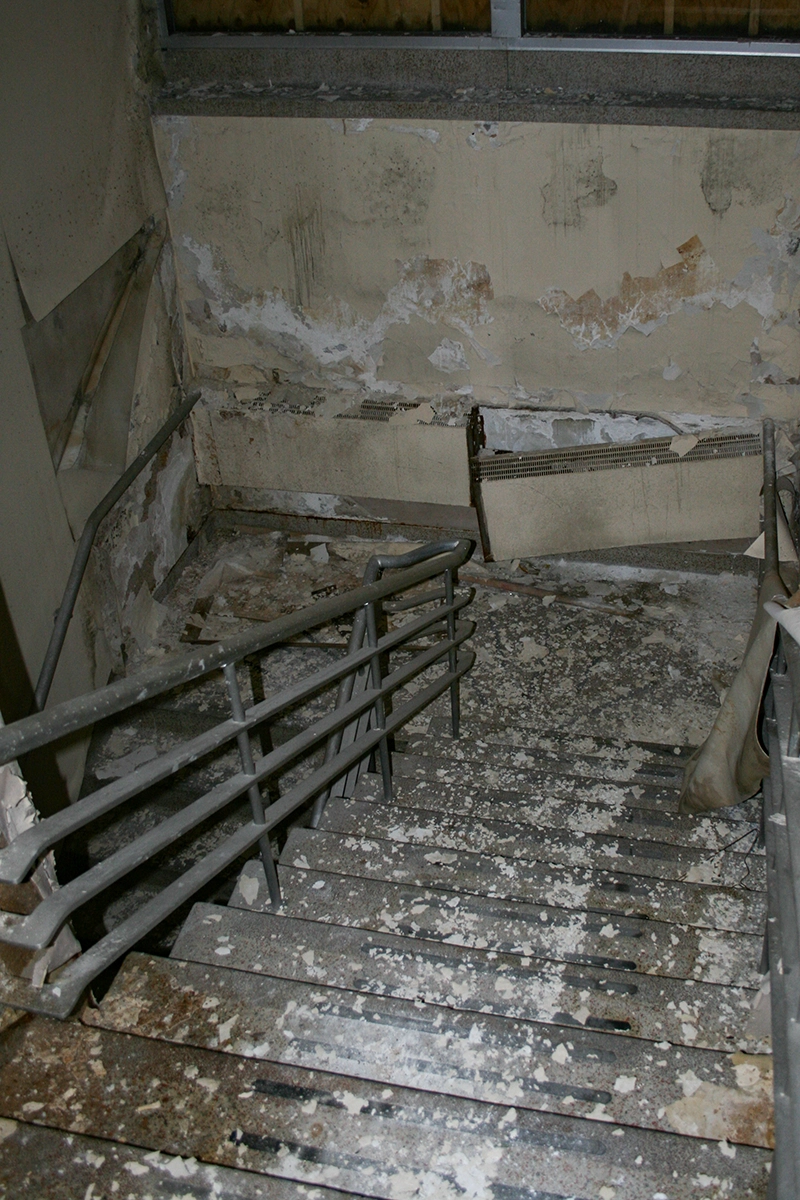
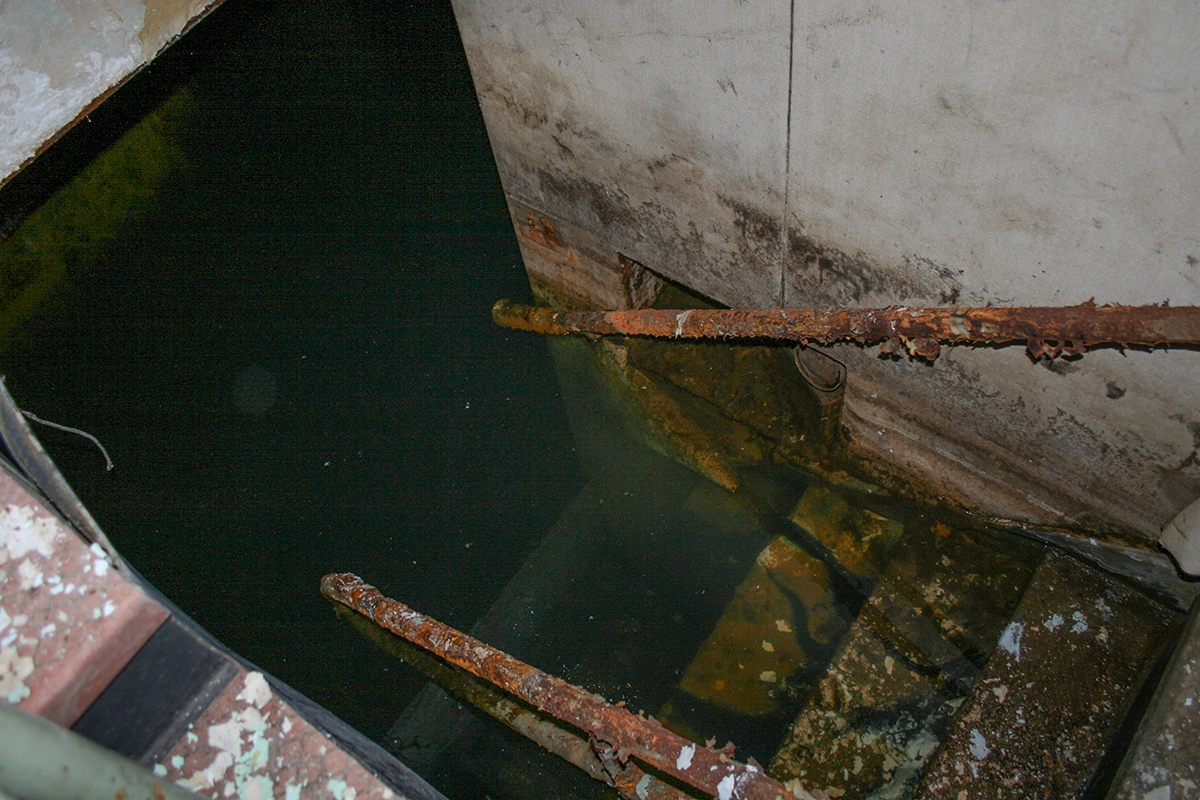
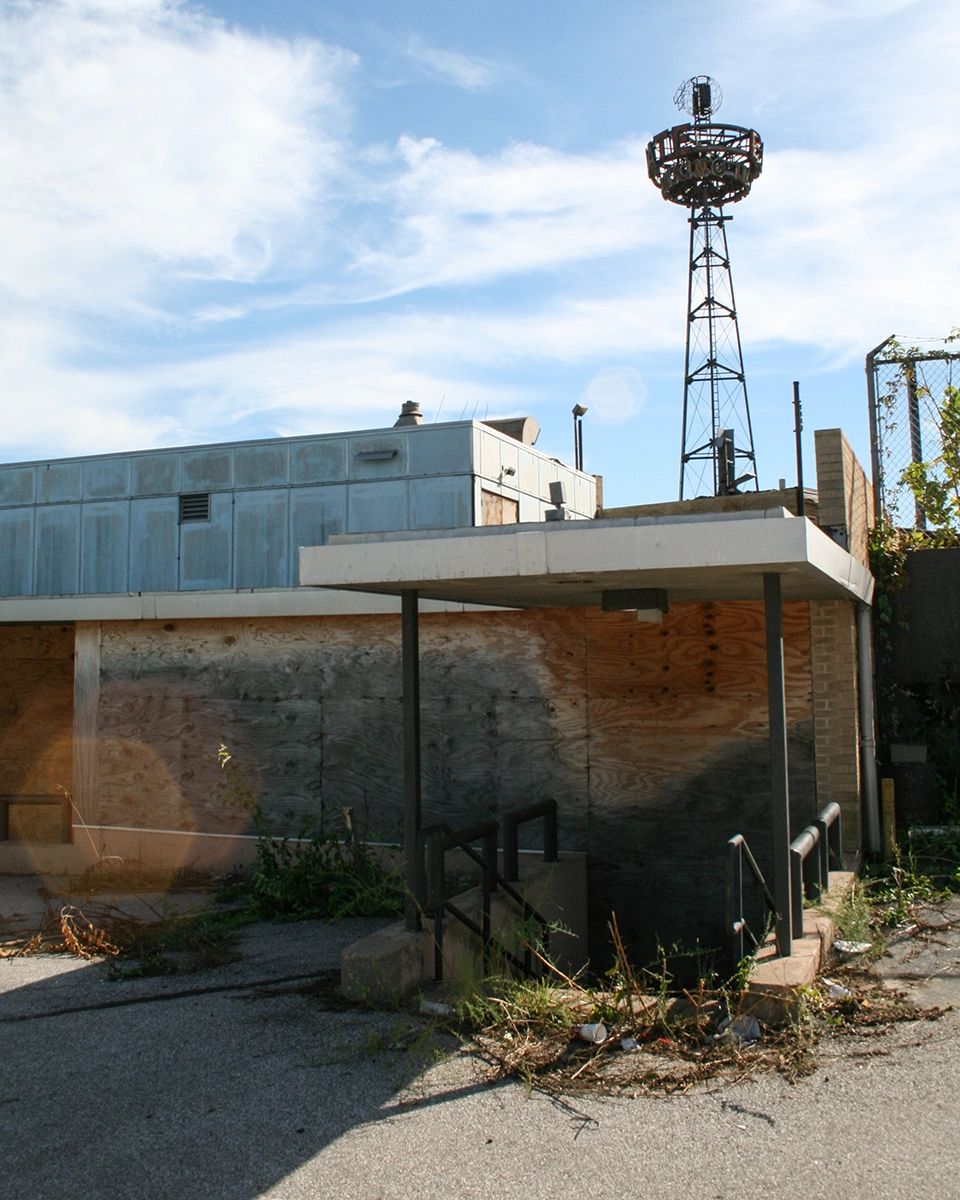
Labels: abandoned, bank, saint louis, urban ruins, urbex, vault

